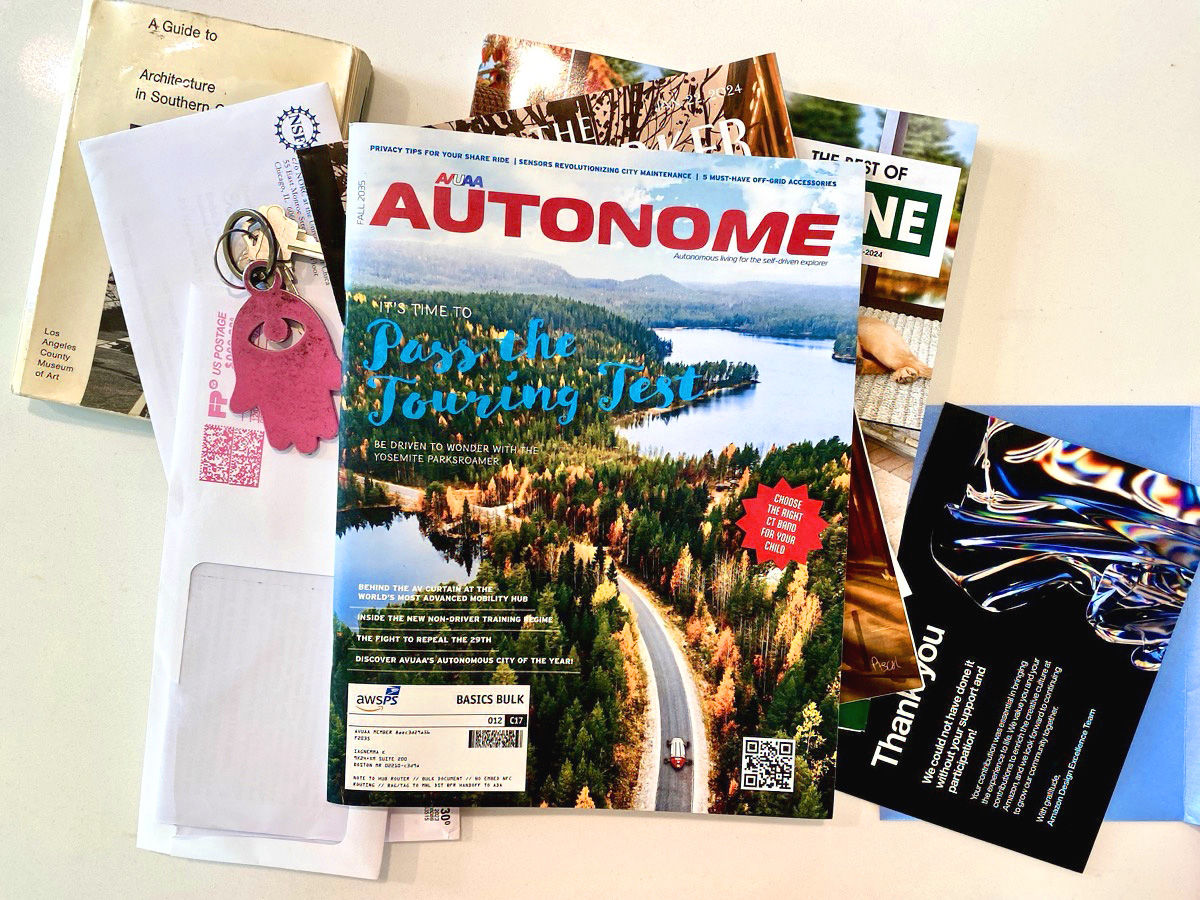
Project Summary
A 72 page full-color Design Fiction magazine from an autonomous vehicle future based on internal strategic vision and roadmaps, industry focus, market analysis, and STEEP foresight research.
Client:
Team: Near Future Laboratory
Project Year: 2022
Project Dates:Published On: Jan 20, 2024, 09:27
Updated On: Jul 16, 2024, 16:05
Written By: Julian Bleecker
car-and-driverlessProject Semantic Tags ARTIFICIAL INTELLIGENCEAUTONOMOUS VEHICLESFUTURE OF XMAGAZINE
The Project
The C-Suite of the third largest autonomous vehicle company commissioned Near Future Laboratory to help them make sense of the full-spectrum of a possible autonomous vehicle future. The result was a rich, vibrant, experiential and immersive artifact in the form of a 72 page full-color Design Fiction magazine from a possible autonomous vehicle future.
The Outcomes
Near Future Laboratory introduced a Design Fiction methodology and approach and delivered a magazine from the autonomous vehicle future, portraying the complexity of a world integrated with autonomous vehicles.\n We were able to successfully bridge the gap between Motional's pioneering work in autonomous mobility and the tangible representation of its impact on future societies, basing the majority of the Design Fiction artifacts and speculative implications on research conducted by Motional's market and consumer research teams, interviews we conducted with key stakeholders, and several internal workshops with Design & Engineering teams at Motional and Hyundai, their manufacturing partner. Through intensive workshops, focused interviews, and a deep dive into collective intelligence, the project synthesized a vision of a world where autonomous vehicles are not just prevalent but ordinary, crafting a narrative that's both compelling and thought-provoking.\n This Design Fiction magazine serves to indicate some of the implications of innovation, aligning teams under a rich and shared vision of the autonomous vehicle future. It provided a unique and highly creative platform for public and stakeholder engagement, as well as capturing the mundane to the profound changes anticipated in such a future, from the evolution of driving schools and the transformation of municipal revenue models to the cultural shifts in perceptions of mobility. By embedding these societal implications in a very familiar archetype, the magazine not only enhances the understanding of what's at stake but also invigorates discussions around the unseen opportunities and challenges ahead.\n For Motional and Hyundai, the magazine has proven to be an invaluable tool for communication, acting as a tangible reflection of their forward-thinking ethos and creative ambition. It has facilitated meaningful conversations internally with key stakeholders, aiding in the visualization of the company's commitment to autonomous mobility. The magazine has served as an instrumental asset, aiding development discussions and research directions to bolstering recruitment efforts by showcasing the company's dedication to futures design and innovative thinking.\n The magazine has augmented Motional's brand as a thought leader in the autonomous vehicle domain, while also underscoring the company's research commitments and desire to develop a deep understanding of the contingent and complex implications of machine-based autonomy. The success of this project is a testament to the power of Design Fiction in converting abstract visions into engaging, tangible artifacts that inspire, communicate, and lead.
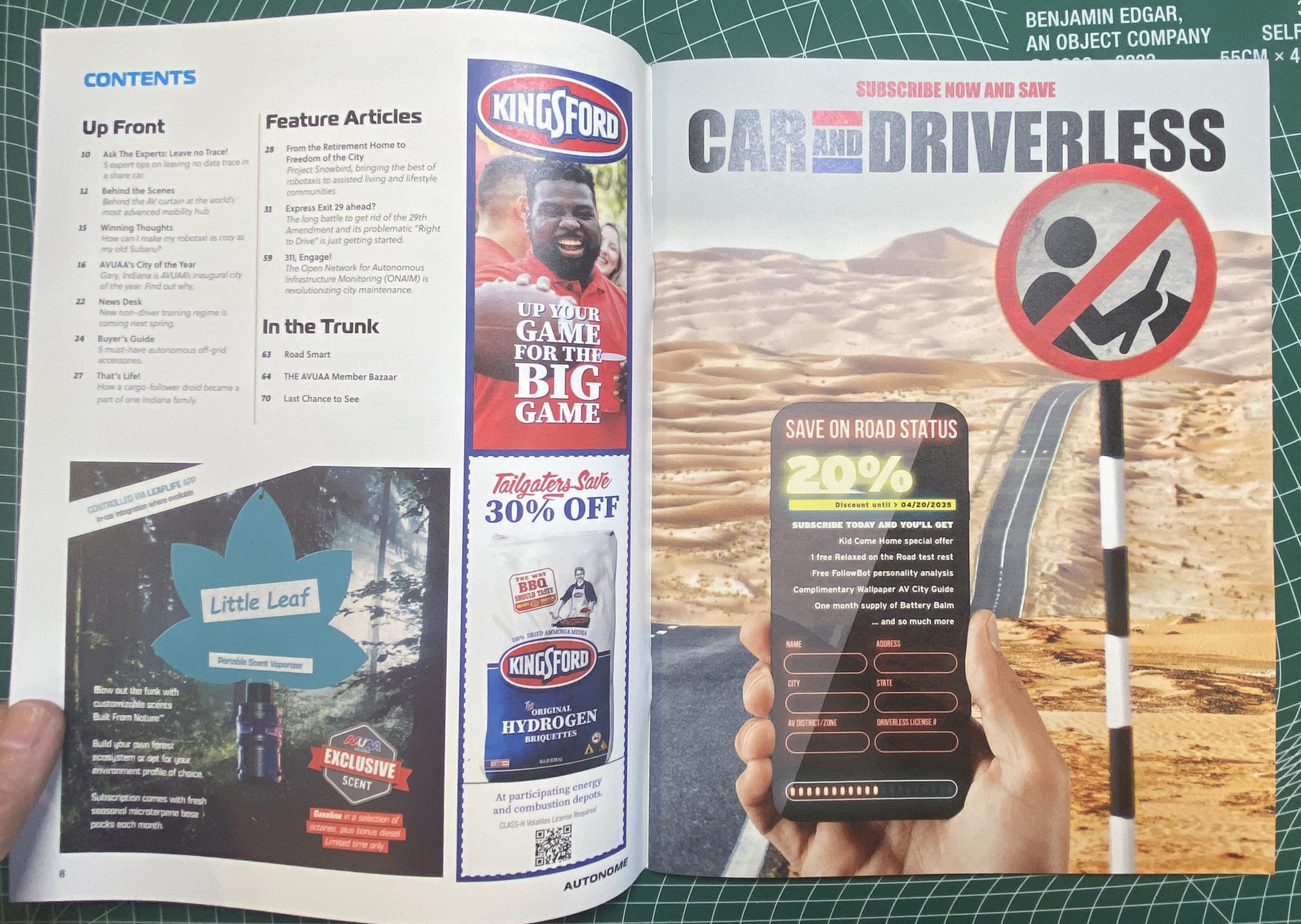
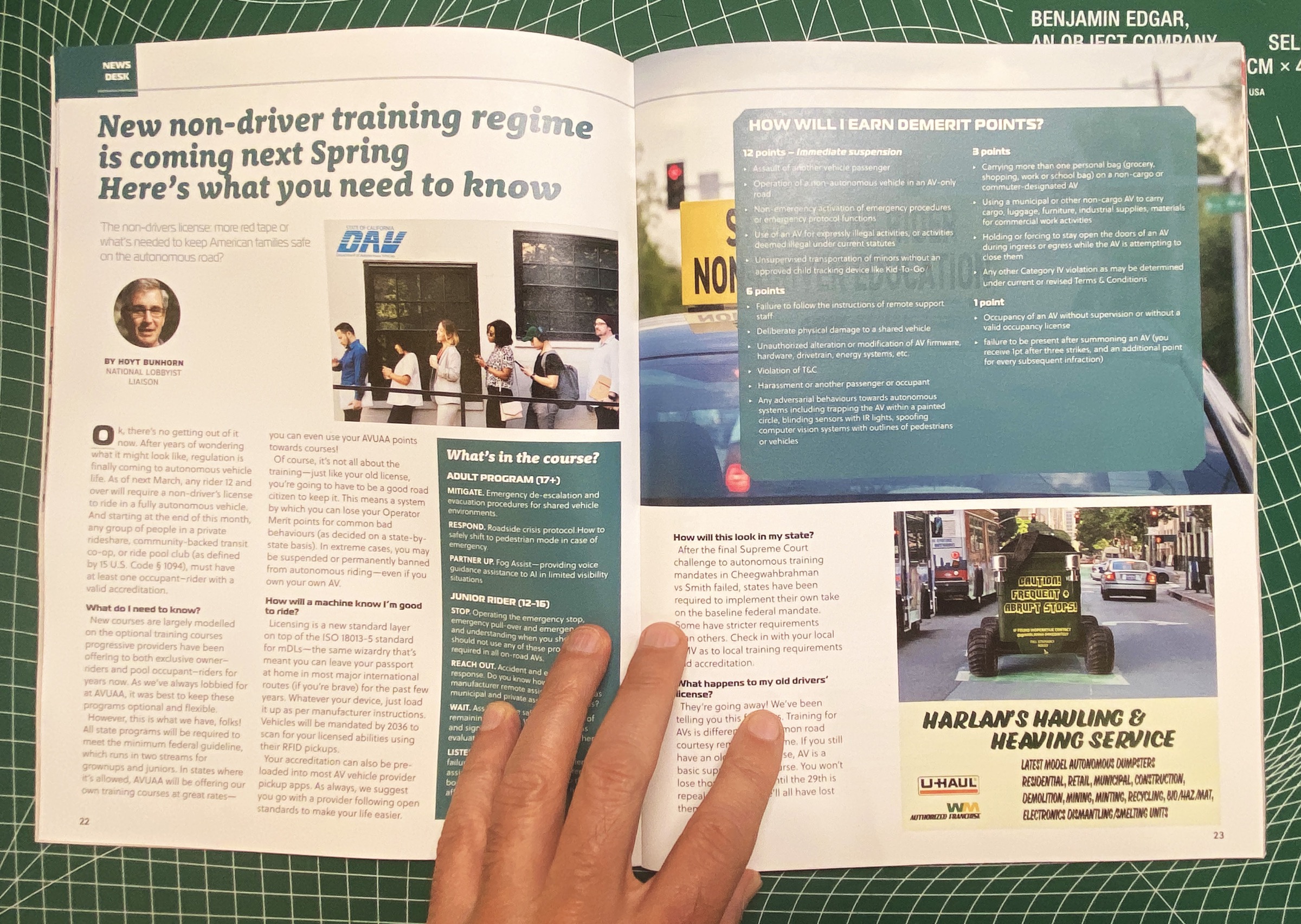
The Brief
Senior Leadership at Motional wanted to envision the Autonomous Vehicle Future that they were building for. They wanted a compelling and tangible representation of the world to help them seek unseen opportunities, spark creativity within the organization, align teams to a common vision, and create an asset that they could use to communicate and publicize their forward-thinking and creative ambition.
We proposed a Design Fiction approach which would engage senior leadership, design, and engineering teams through our Design Fiction methodology. We proposed our typical three phase Design Fiction methodology.
In Phase 1 we did a deep-dive into the collective intelligence and research assets, as well as focussed interviews and workshops.
In Phase 2, we synthesized these findings, and presented possible directions we could go in order to transform these findings into a tangible artifact that could capture the diversity of findings. We settled on a Magazine as a Design Fiction artifact that would feel as though it had come from a possible future in which self-driving vehicles are normal, ordinary, and everyday.
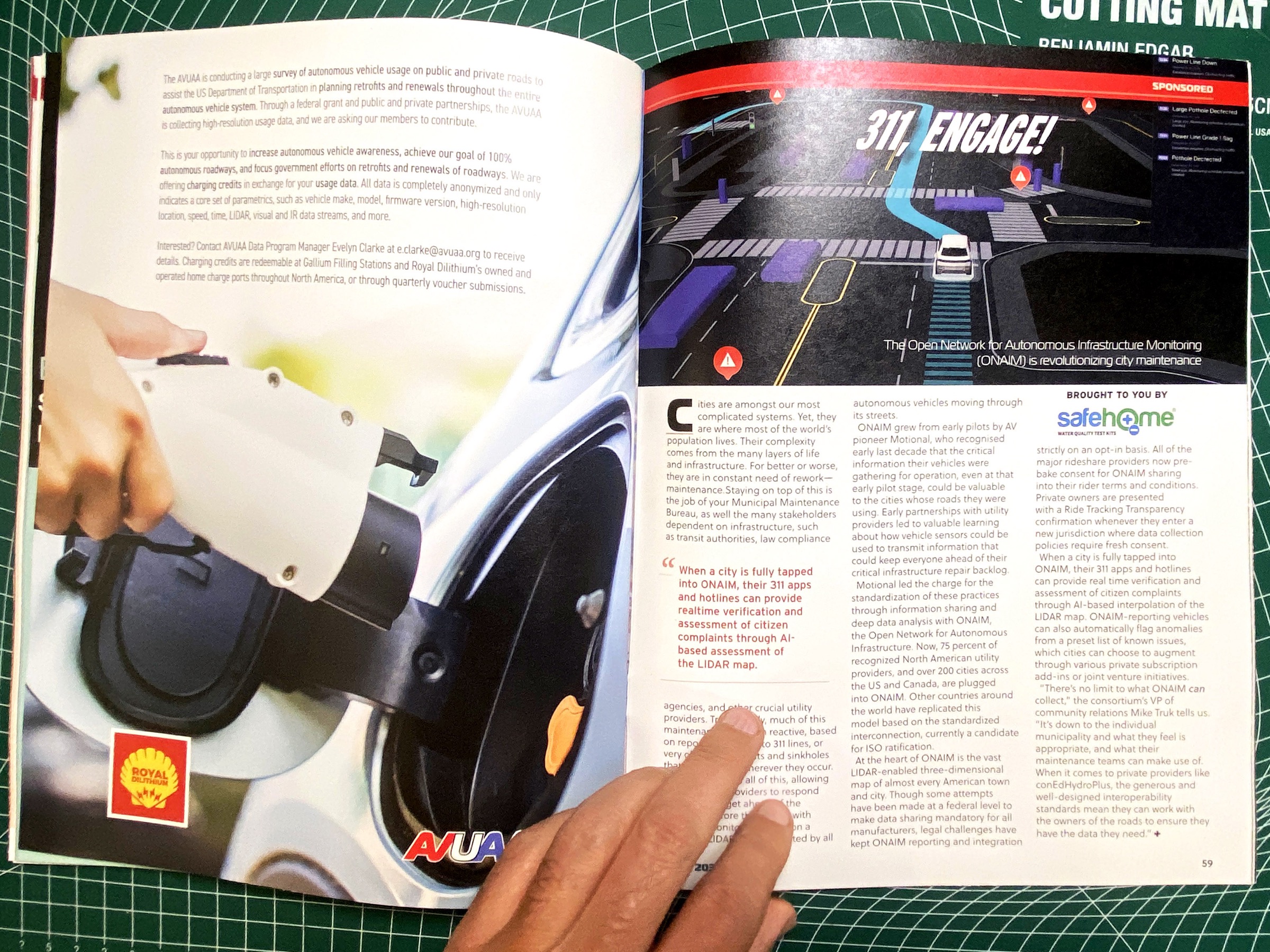
Phase 3 was design production and development to produce and ultimately manufacture (print) a vivid 72 page paper magazine. Motional could dissiminate this artifact internally as well as to external stakeholders and the public in order to represent a world of autonomous vehicles.
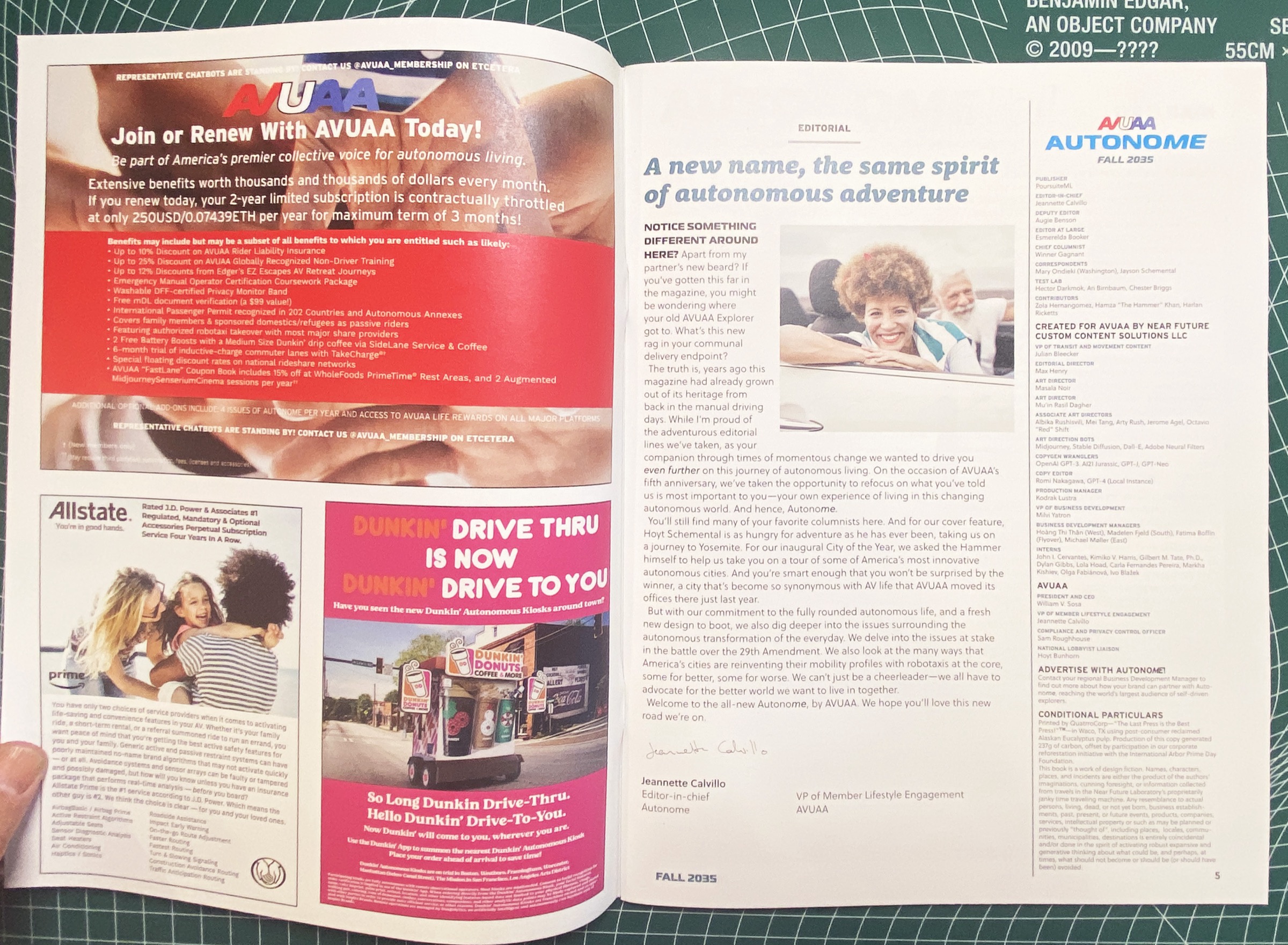
Autonome Magazine is a representation of the collective intelligence of Motional. It is a translation of their vision. It offers a compelling representation of the consumer, markets, ethnographic, and technology research they’ve conducted in a format that is quite legible and perhaps even more enjoyable to consume than a traditional terse research report. In it are the implications of the social, technological, economic, environmental and political trends. We can feel into their roadmaps, and strategic priorities. Ultimately, Autonome Magazine is a truly unique and creative representation of the autonomous vehicle world, one in which intelligent vehicles are normal, ordinary, and everyday affordances in the world.
The Design Fiction Approach
Translate Motional and Hyundai’s strategic foresight, market and consumer futures research and represent the implications and conclusions of this research from the perspective of that future.
Near Future Laboratory’s Role
We faciliated all aspects of this Design Fiction project, including facilitating the discovery process in Phase 1, the synthesis of insights from Phase 2, and the graphic and visual design, design layout, design production, and magagazine manufacturing of the Design Fiction artifact for Phase 3.
The Process
We worked very closely with design teams, engineers from Hyundai, their manufacturing partner, and senior leadership to create a compelling, vivid sense of possibility. This project took place during a period of global lockdown, thus was done fully online with remote collaboration.
Our process consisted of three phases: Design Discovery, Design Explorations, Design Production.
Phase 1 - Design Discovery
Design Discovery is the ‘forensic investigation’ phase in which we are made privvy to the client’s existing strategic visioning, consumer research (both quantitative and qualitative), and any related or endemic primary material. This phase also consists of interviews and conversations with senior leadership as well as front-line engineers, designers, and key stakeholders. The objective is to get a thorough appreciation of the ambitions, hopes, dreams, fears, and contingent factors that are shaping the collective imagination of the organization.
This Design Discovery phase goes beyond analytics so we can factor in the contingent aspects of possible futures. This happens through our General Seminar Design Fiction Workshop process in which we travel into possible autonomous vehicle futures rather than just predict and prognosticate. In this case, Near Future Laboratory facilitates discovery in possible futures by engaging in deep-dives where we begin with evocative prompts to help get into the mundane characteristics of possible futures.
These General Seminar Design Fiction Workshops are where we capture and synthesize aspects of possible futures that are difficult to gather otherwise. They provide insights into the multiple possiblities where commercial, design, and engineering opportunities and challenges lie. We use these as opportunitites to travel into possible futures, prompting ourselves to consider the normal, ordinary, everyday experiences people may face.
PROMPT: You’ve bought a sofa on Craigslist. How do you get it home in an autonomous vehicle future where ownership of vehicles is a thing of the past?
GENERATIVE DISCUSSION: What are the opportunities for providing cargo delivery, pickup, storage and related facilities, affordances, and businesses in a possible future? How can we represent these for later recall?
PROMPT: In a world in which non-humans drive, and humans merely occupy vehicles, what happens to ‘Drivers’ Licenses’? What are the contingent implications beyond the technology factors?
GENERATIVE DISCUSSION: How do you allow or disallow a segment of people to use autonomous vehicles? How do you address bad-actors who abuse social norms? What happens to the revenue from drivers licensing? How do we manage establishing our identity in endemic and non-endemic contexts when the drivers license is no longer?
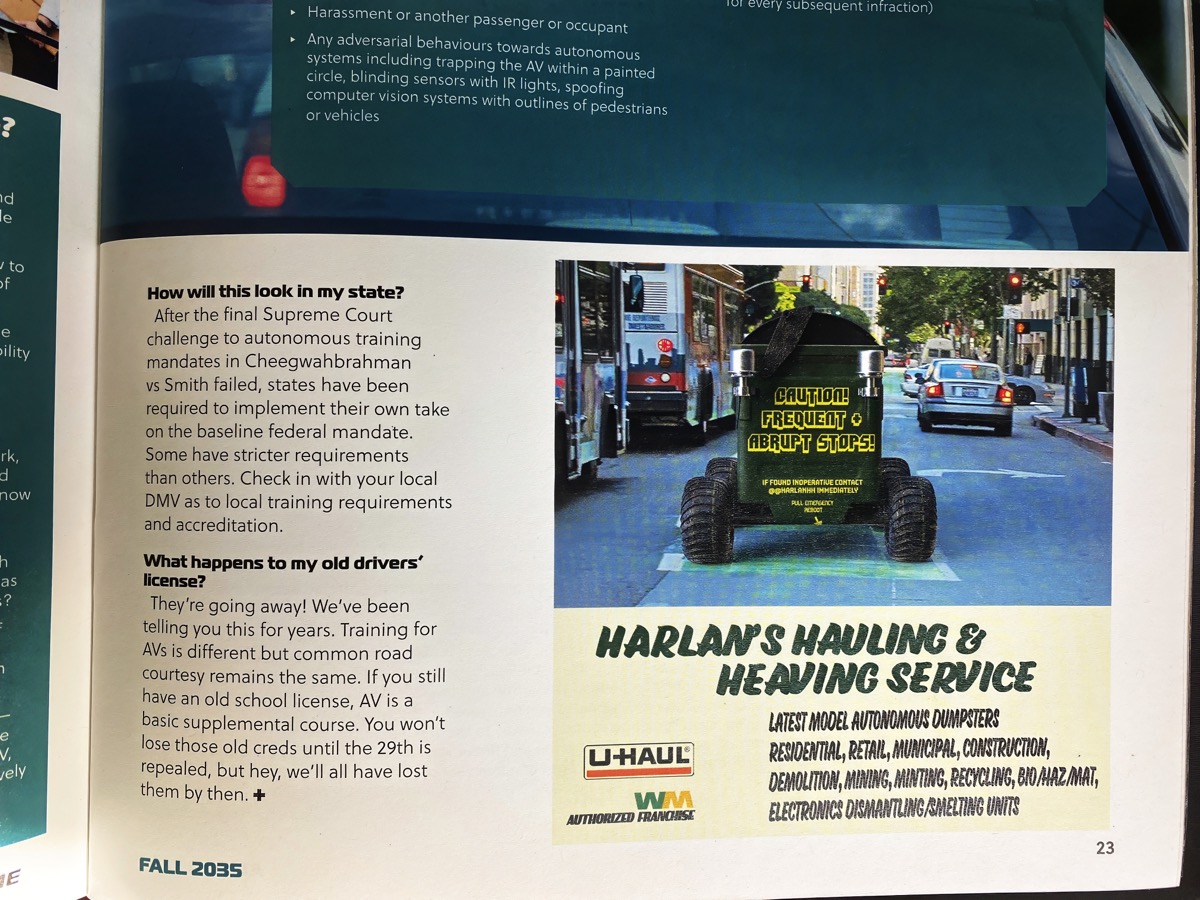
Phase 2 - Design Explorations
This is a synthesis phase where we decant the expansive exploration and deep-dive into a possible driverless future from Phase 1. The synthesis consists of translating these insights into ‘implications’ or ‘symptoms’ of the future in the form of simple and humble results — advertisements for services that have emerged, evolutions of recognizable brands adapting to the autonomous future, endemic feature articles, letters-to-the-editor expressing concerns or support on topics of the day, and so on.
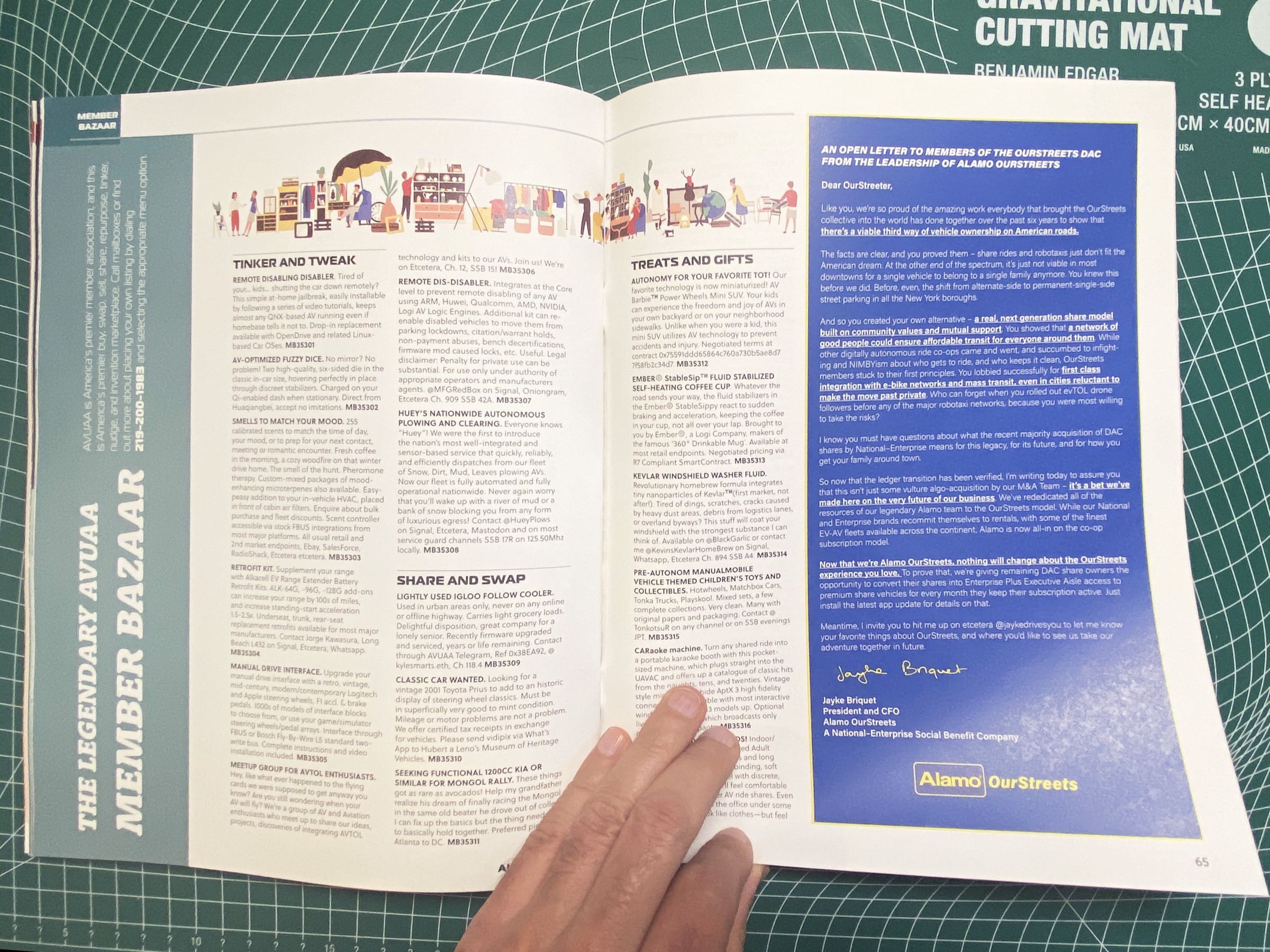
Phase 3 - Design and Creative Production
This is the lengthiest phase where we work to ground the high-intuition and imagination of Phase 2 and bring it into the container of a Magazine. We operate in this phase as a magazine design team, taking on the specific roles therein.
We create principle imagery, construct a flatplan, produce 3D objects, author articles and editorially manage the necessary consistency of ‘the world’.
It is important that we do all of this work, rather than outsourcing to a third-party. Creating representations of the future has a subtlety to it, and it is one we’ve honed over 20 years of working in this space.
After Action Report
The Magazine as a Design Fiction archetype offers a rich frame and we took full advantage. This project was able to present the world fully and with verisimillitude allowing for a deeply immersive, experiential container of possible futures.
For Motional and their manufacturing partner Hyundai, it provided a platform for conversations with key stakeholders and offered a representation of their complete commitment to the autonomous vehicle strategy. It also serves as an aid for assessing development, a tangible reminder of ongoing research domains and topics, and as a reflection of the vision and ambition of senior leadership.
Additional opportunities exist for it to serve as an aid in recruitment as it reflects a high-level of commitment to creativity, futures design and integrated imagining. The magazine is also a useful and low-cost bundled give-away for events, such as developer days, hack-a-thons, conferences, and investor relations.
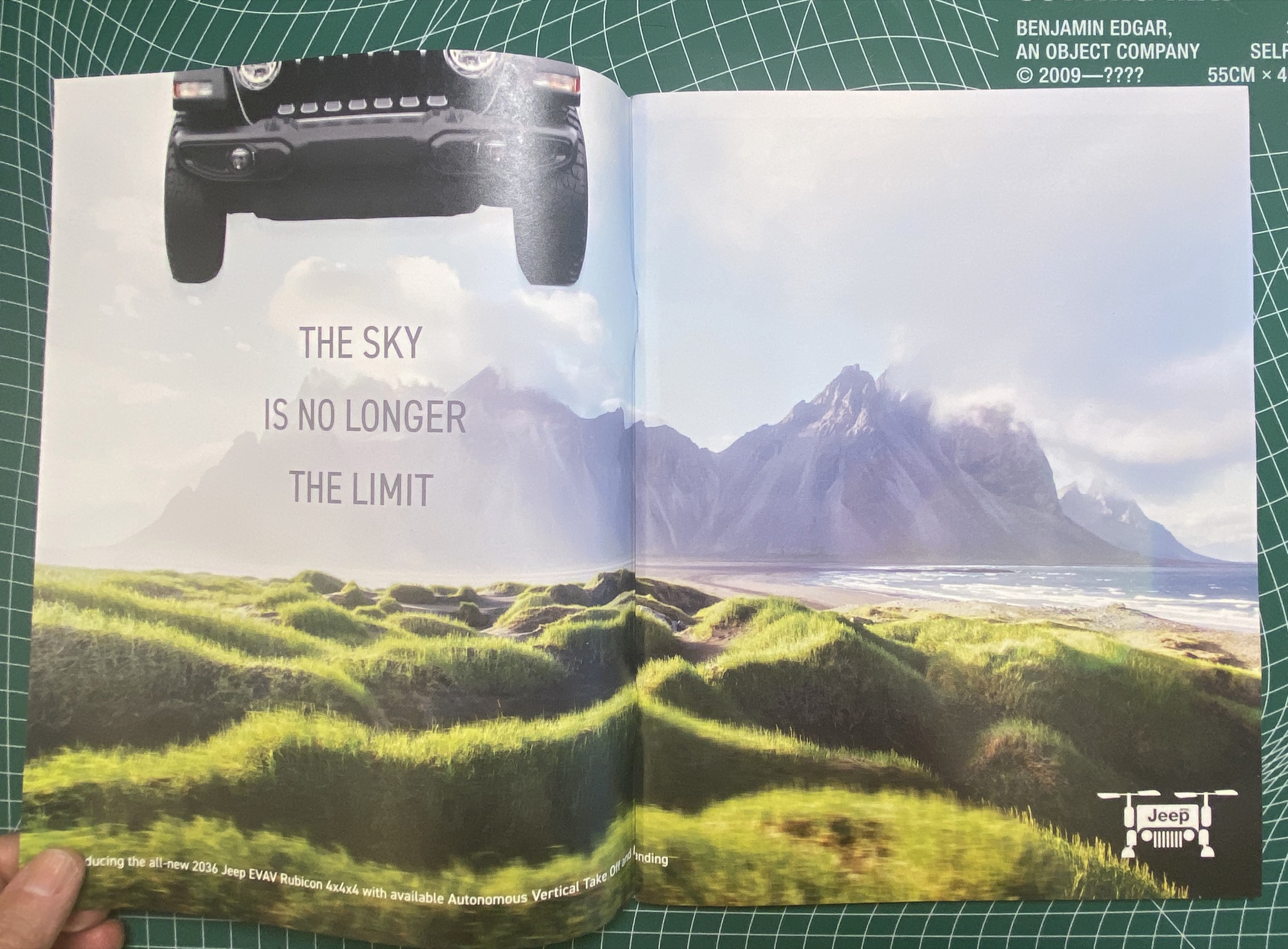
More Information
To learn more about how we created this and to find out how to engage Near Future Laboratory, contact us directly.
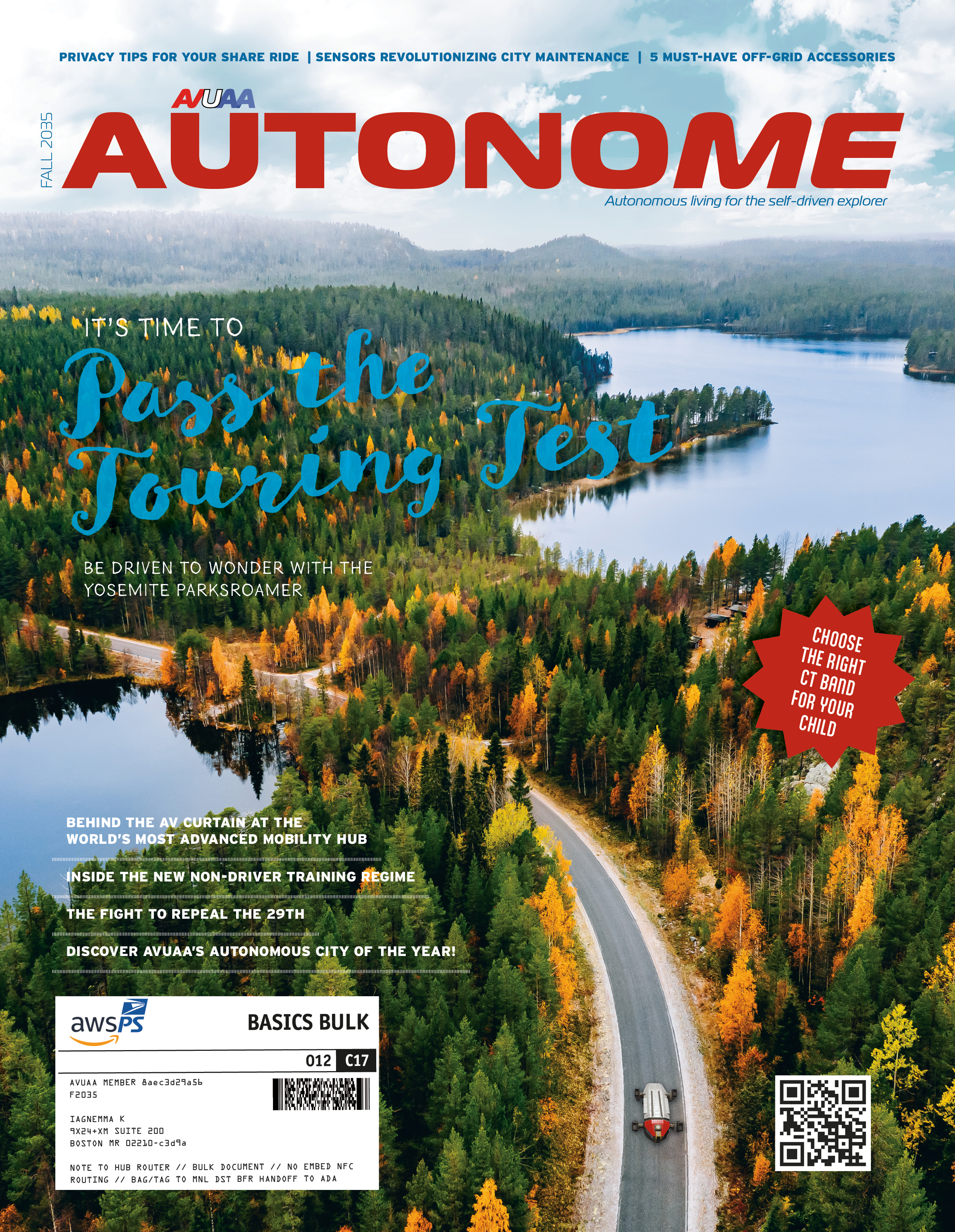
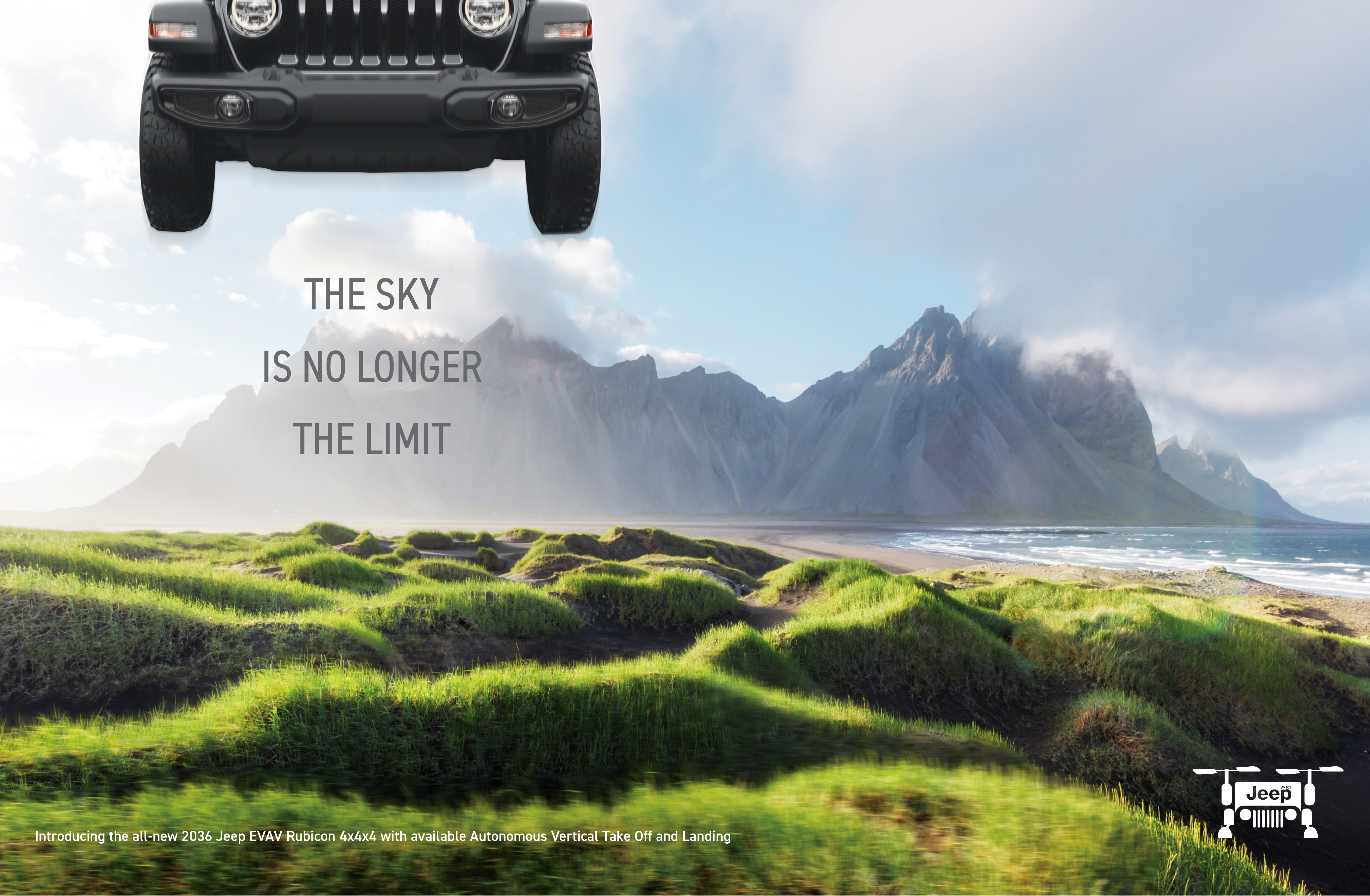
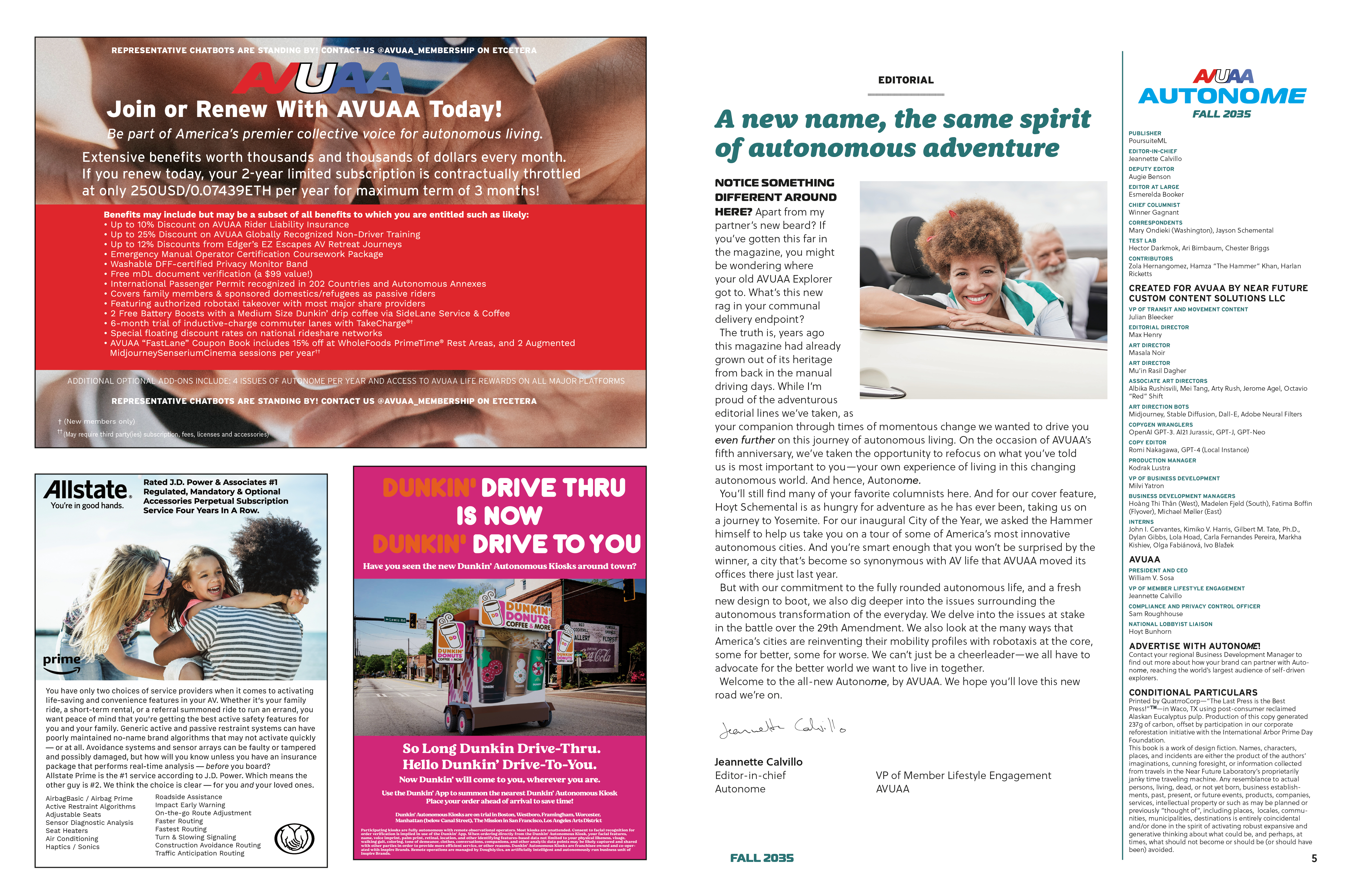
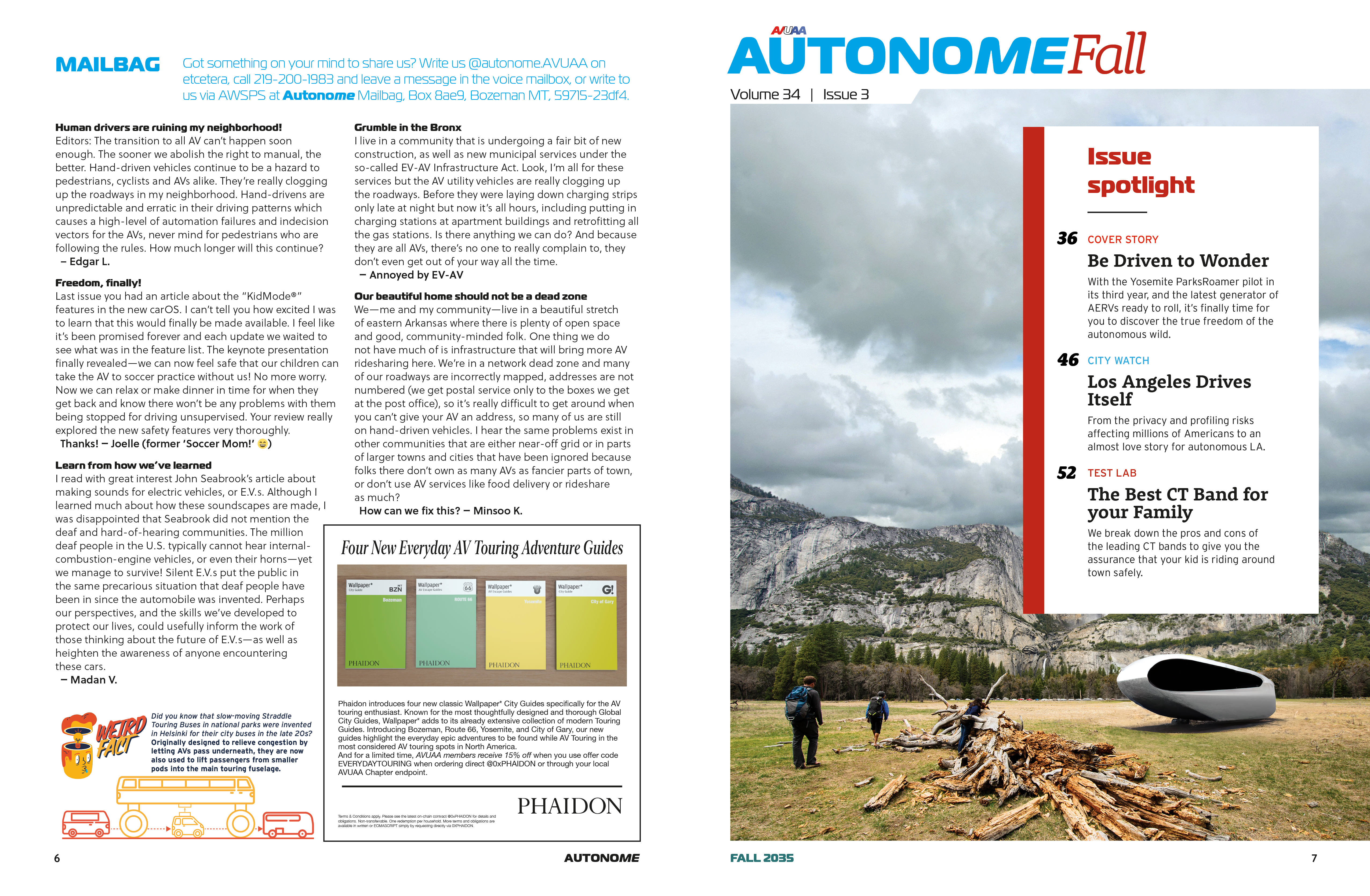
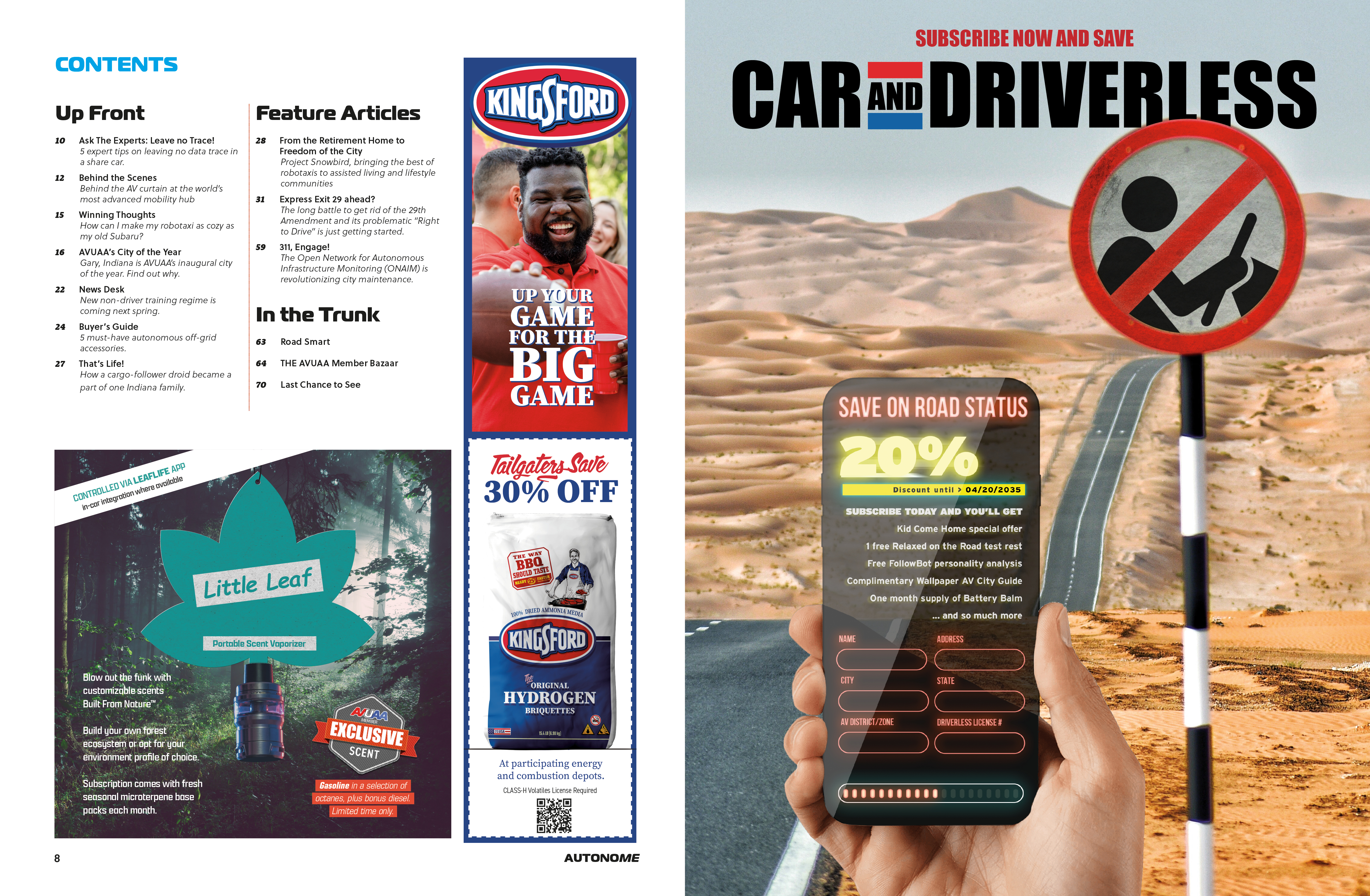
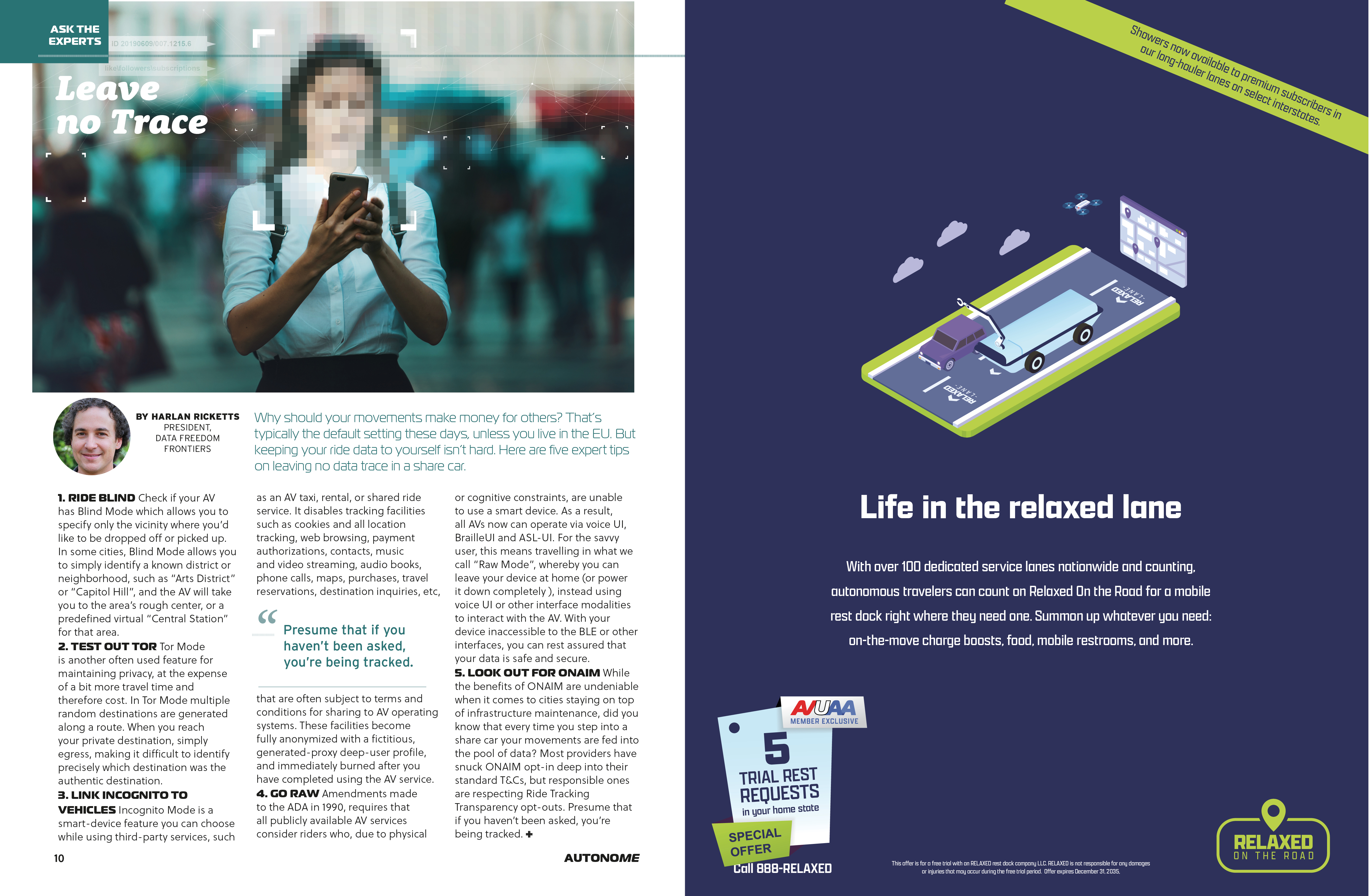
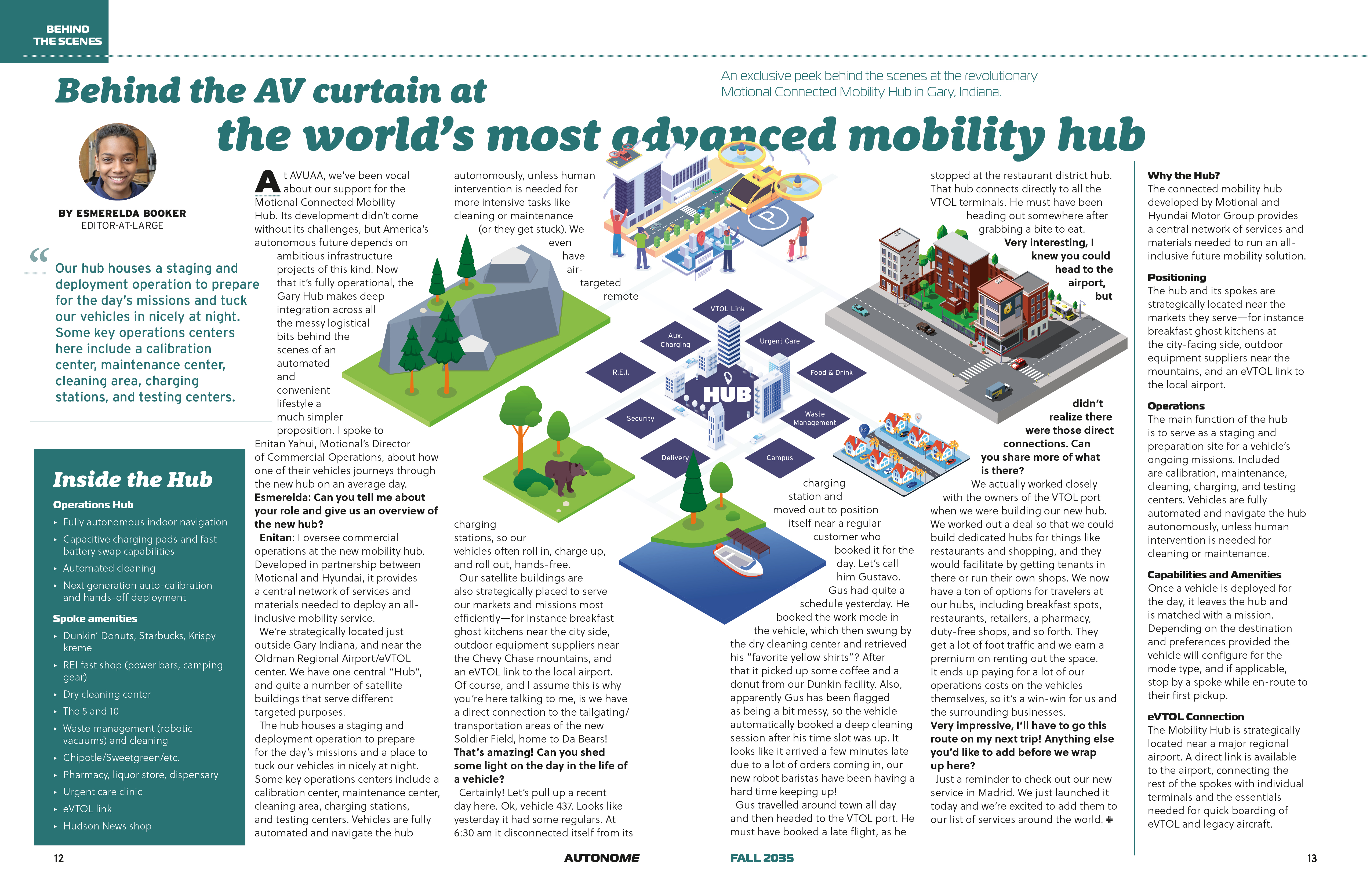
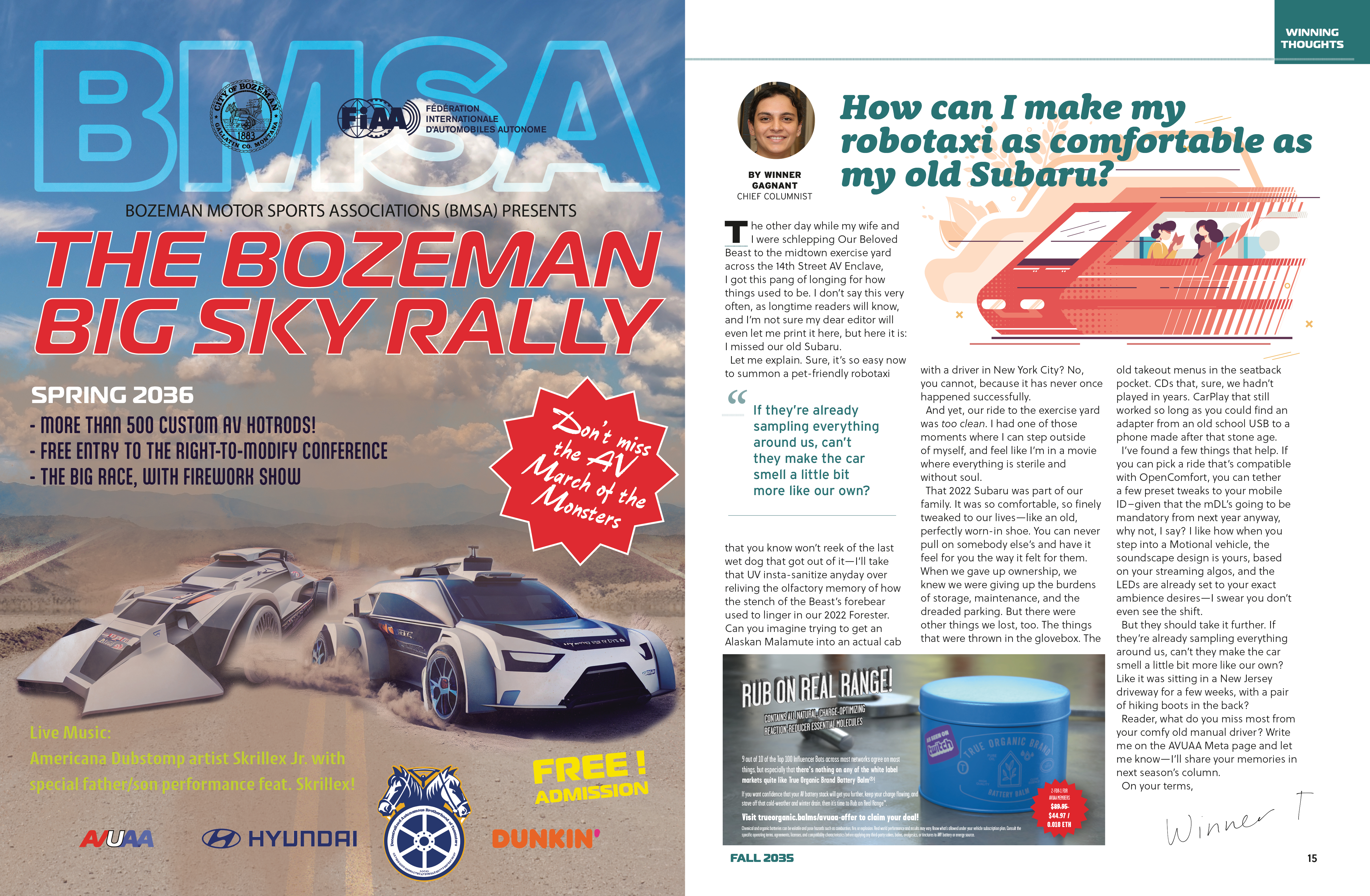
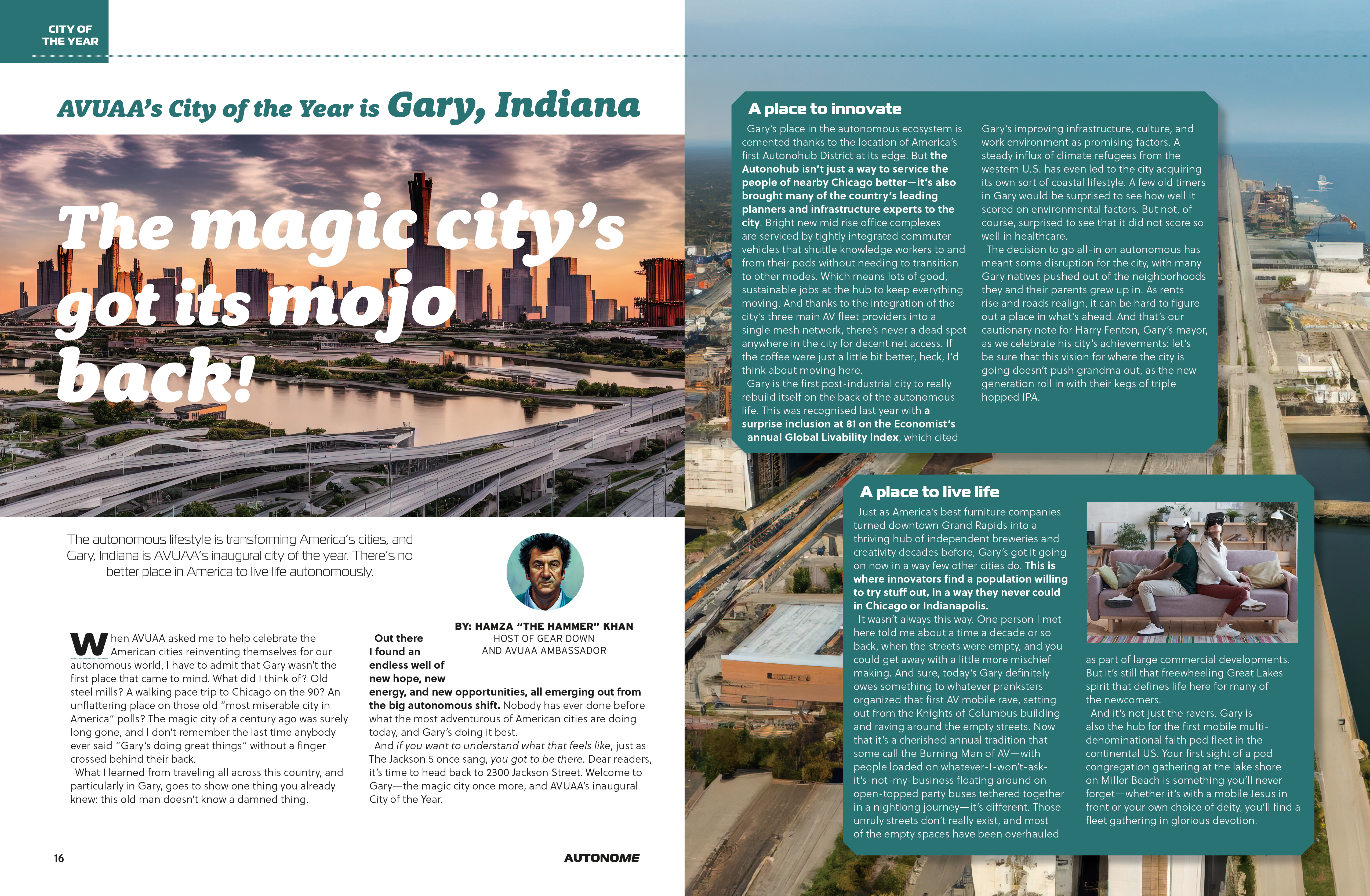
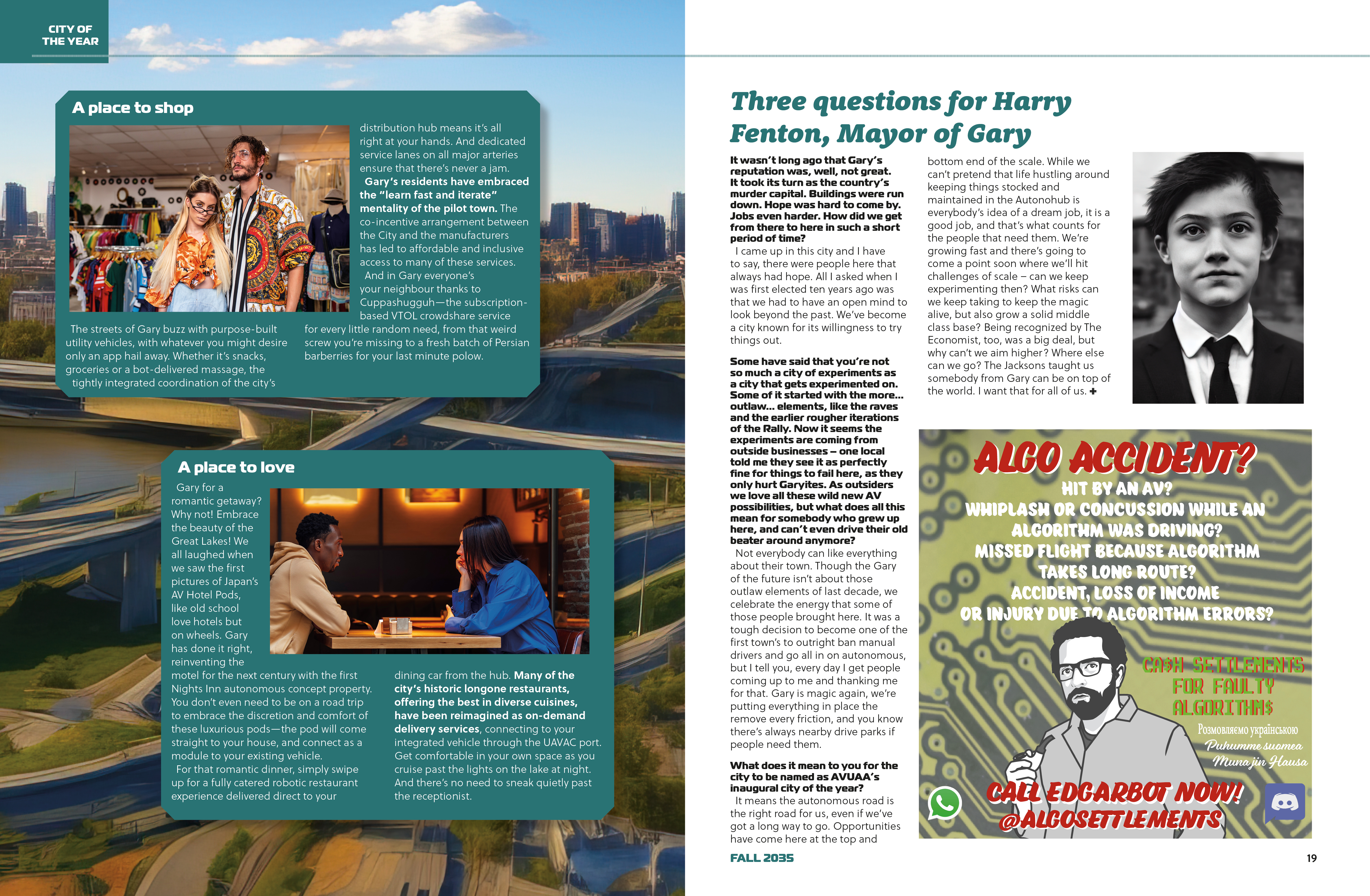
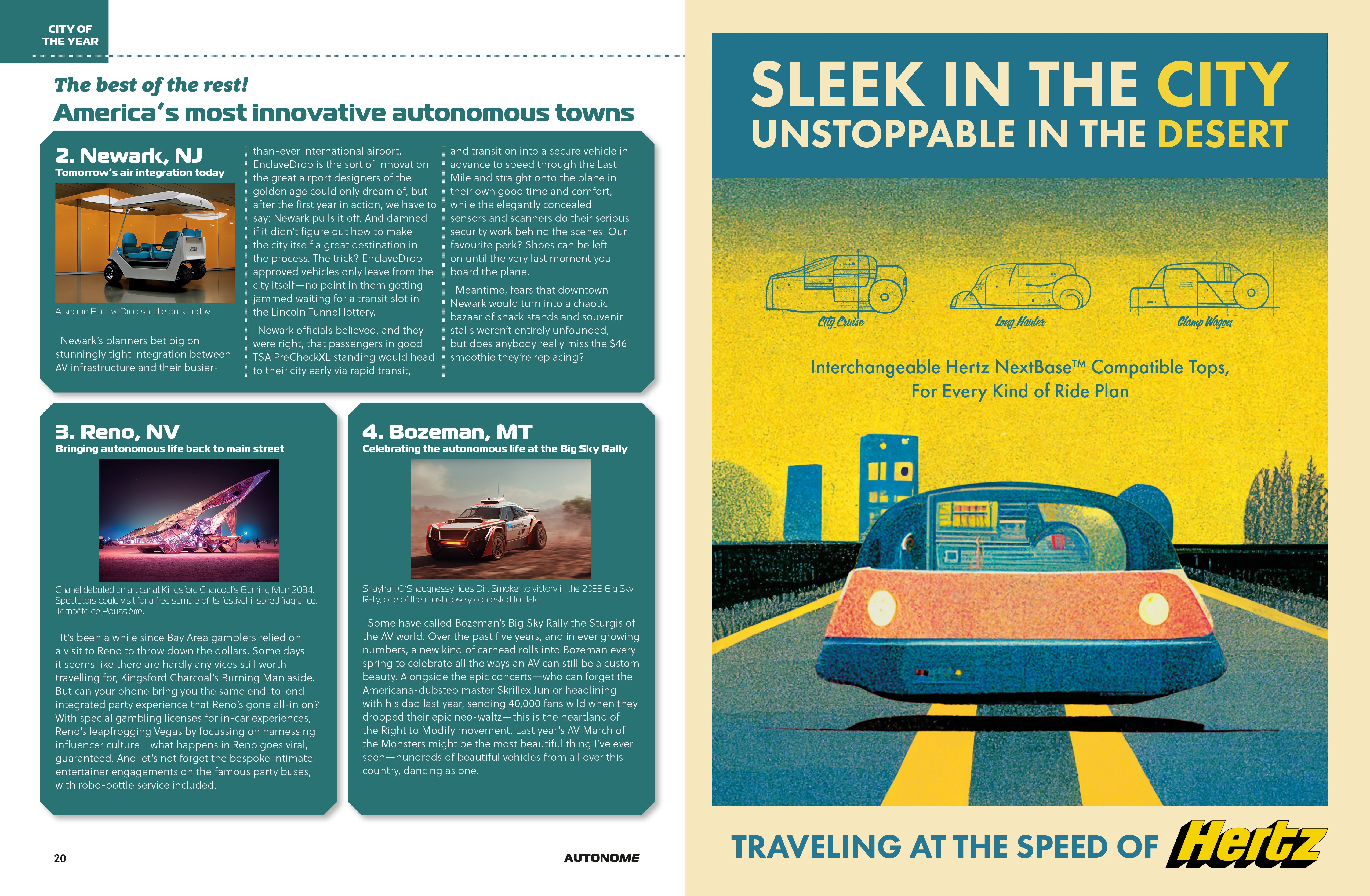
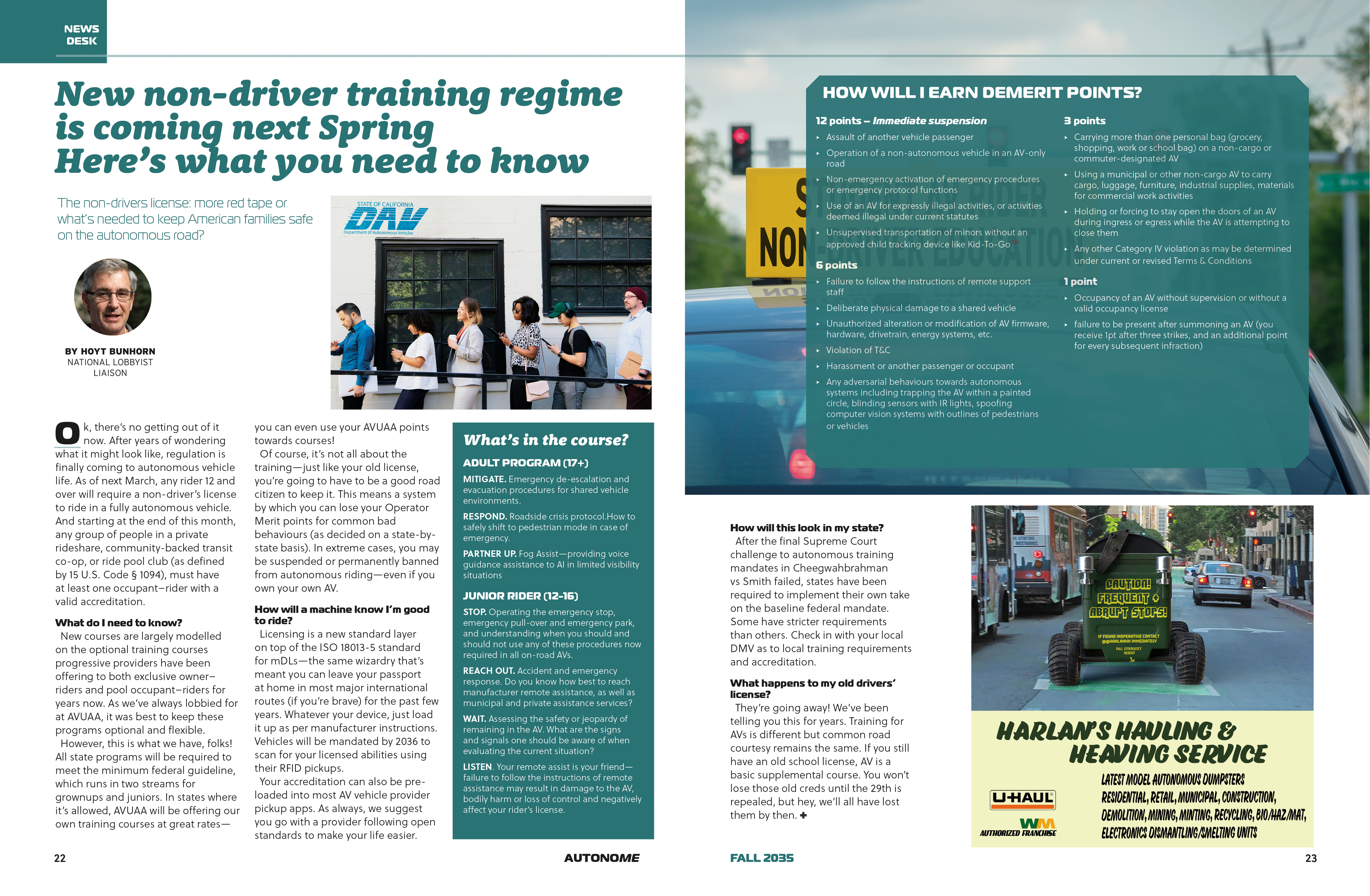


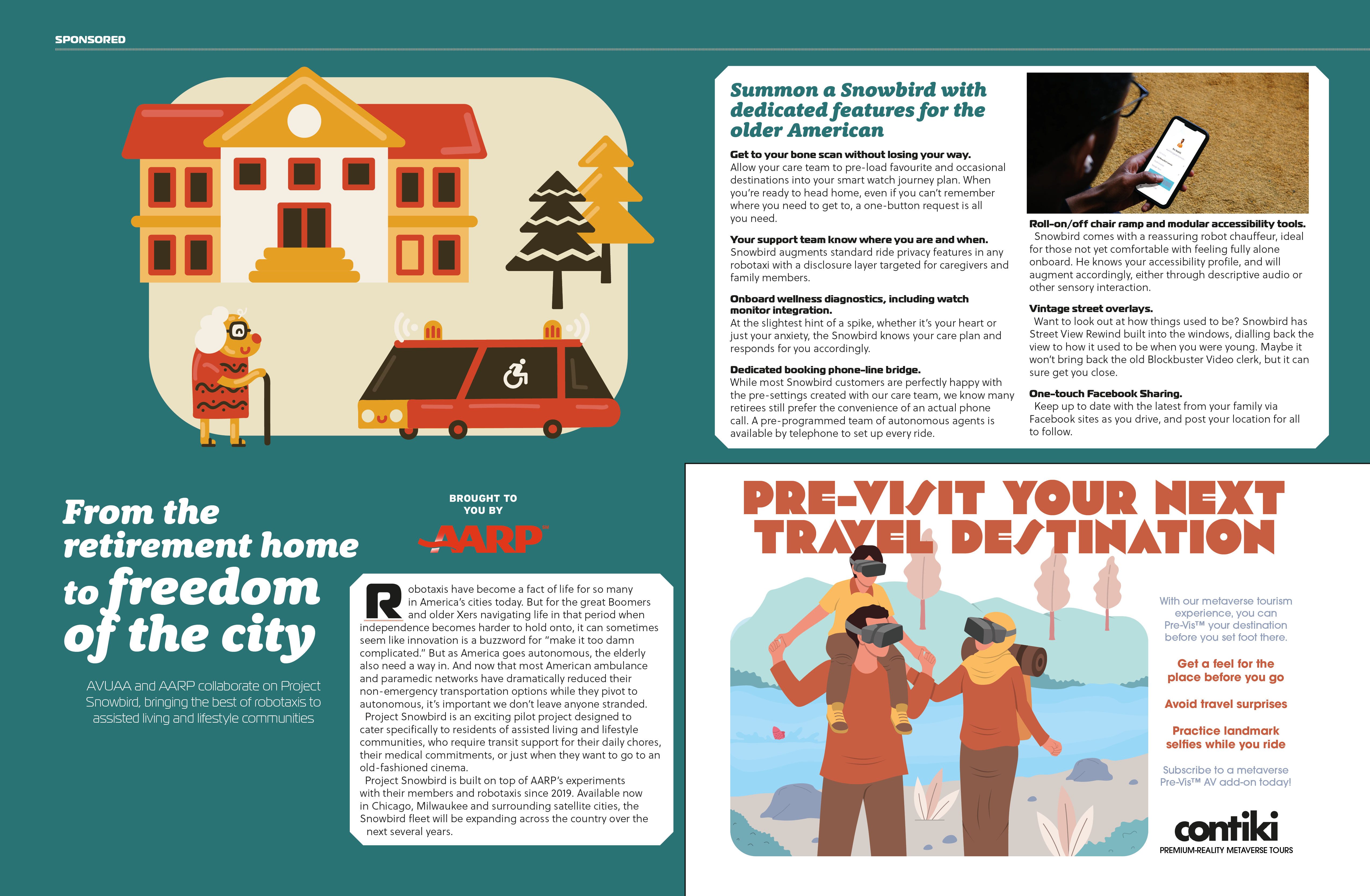
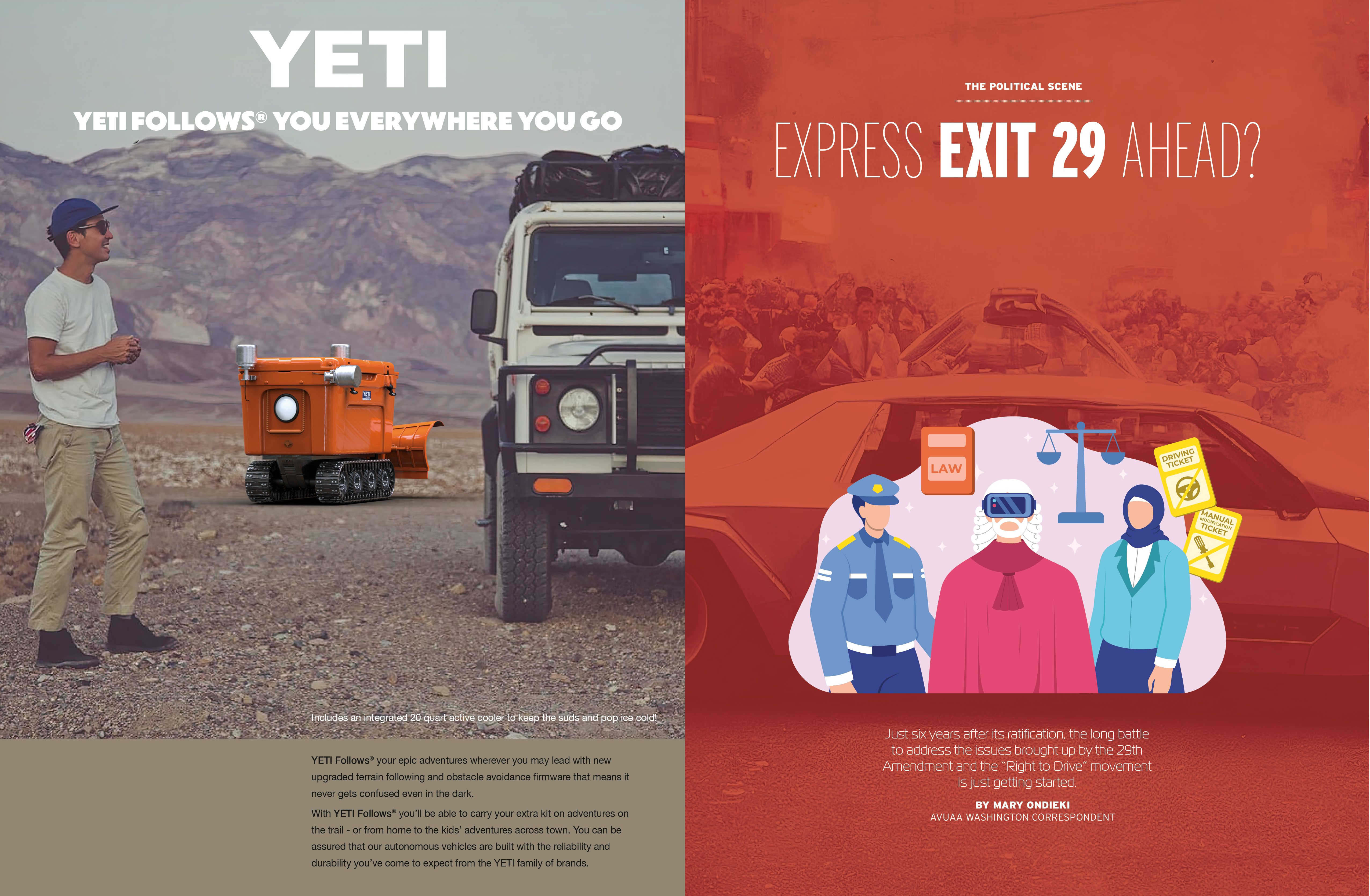
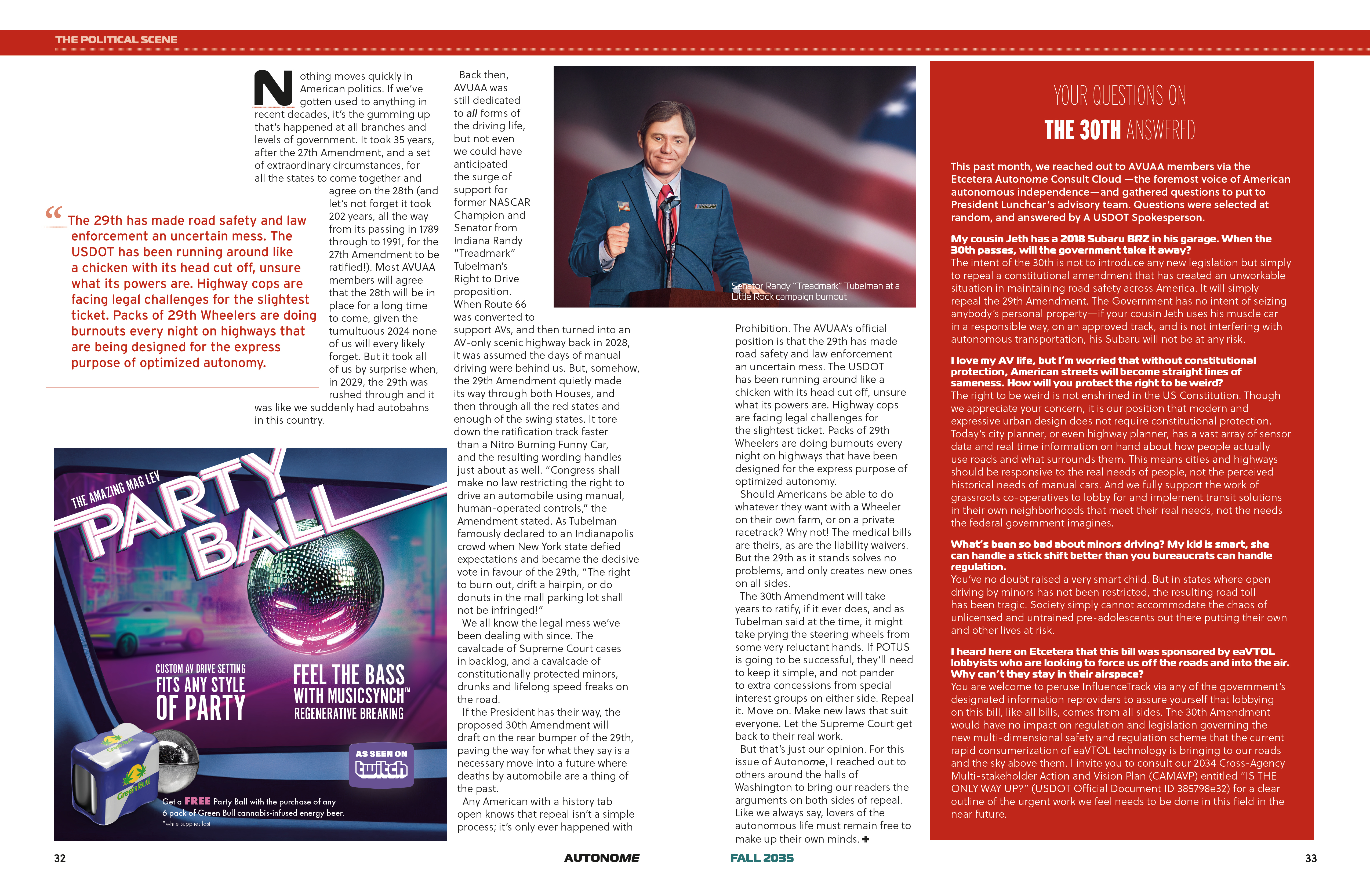
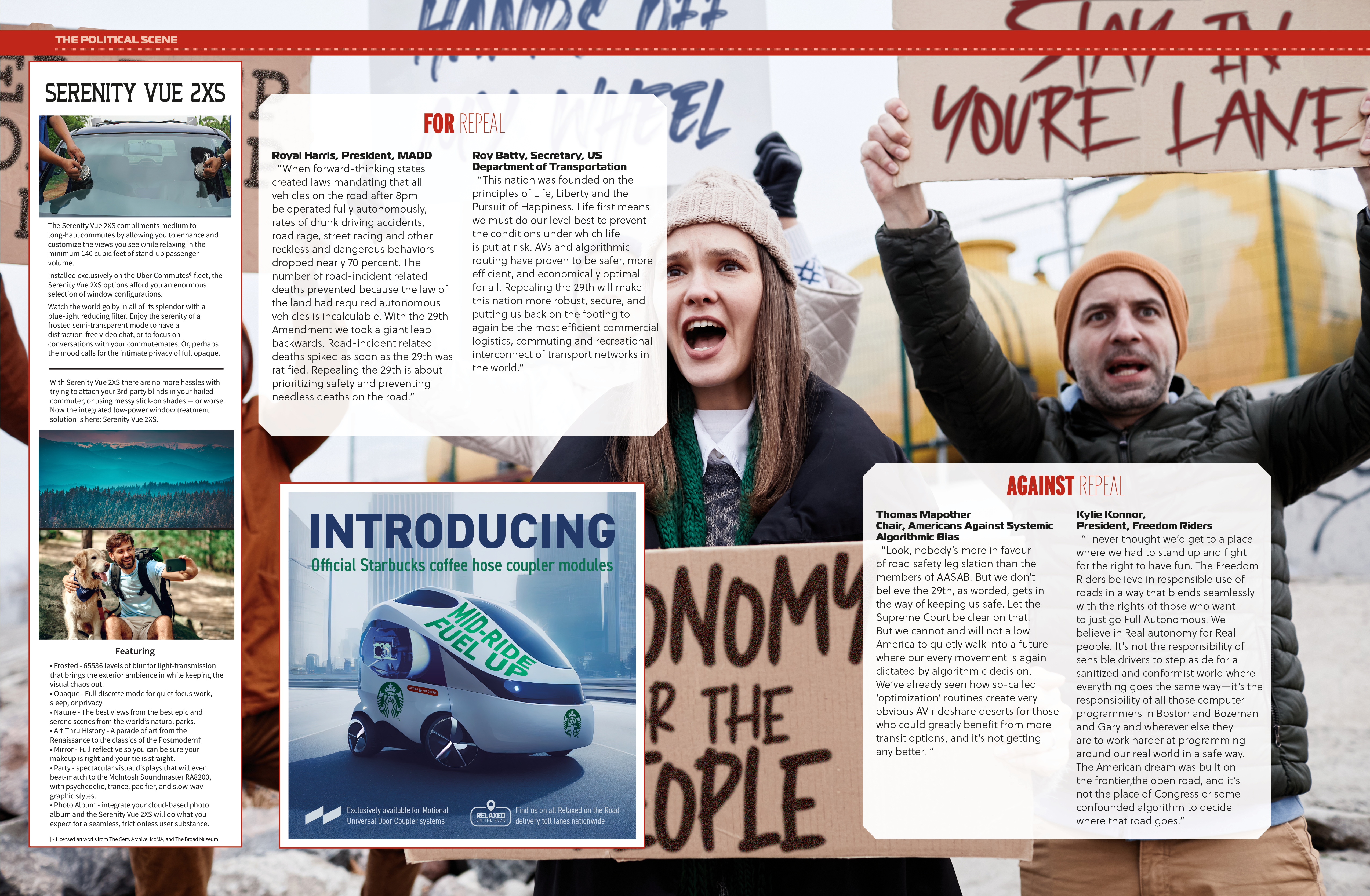
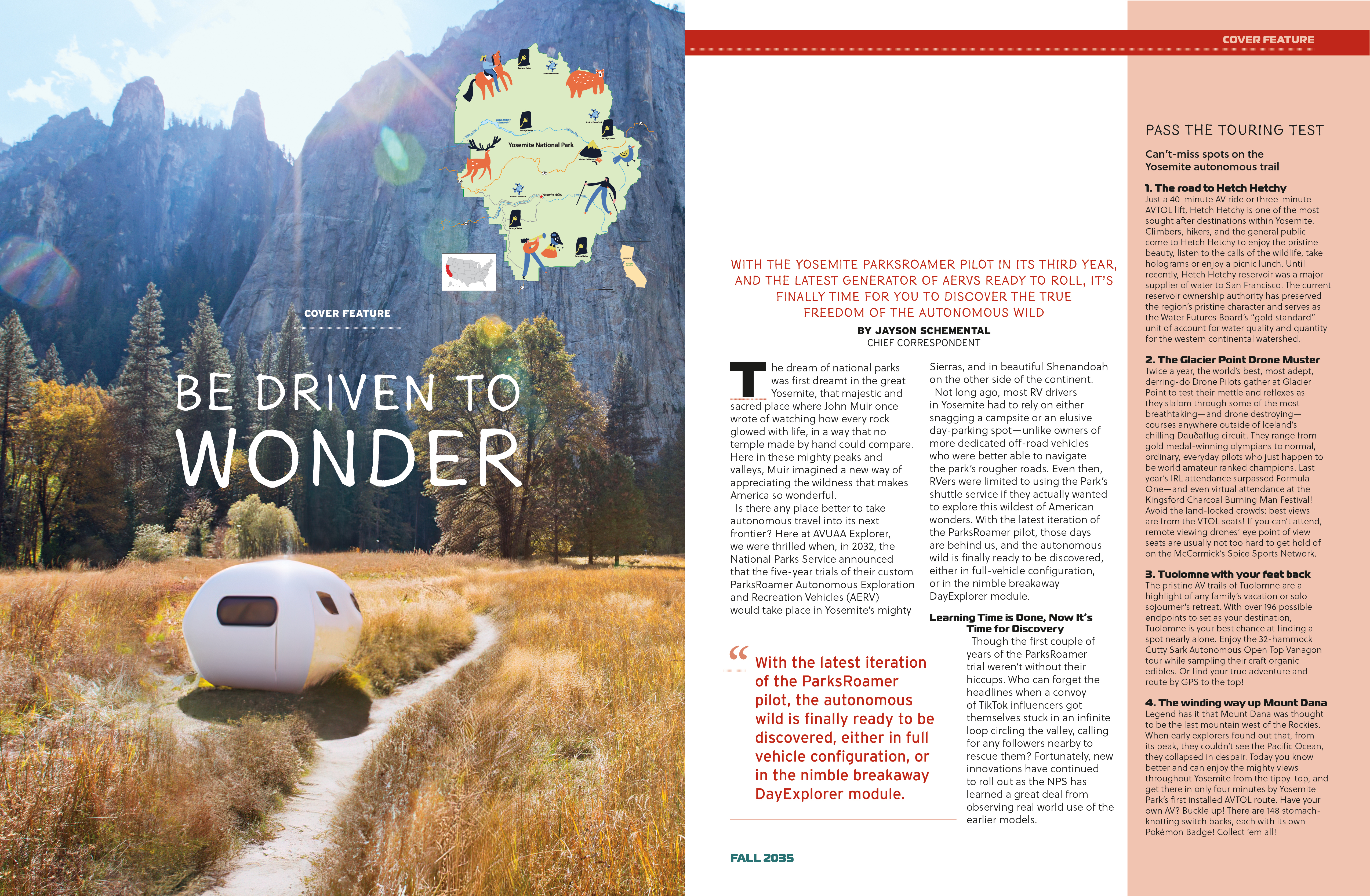
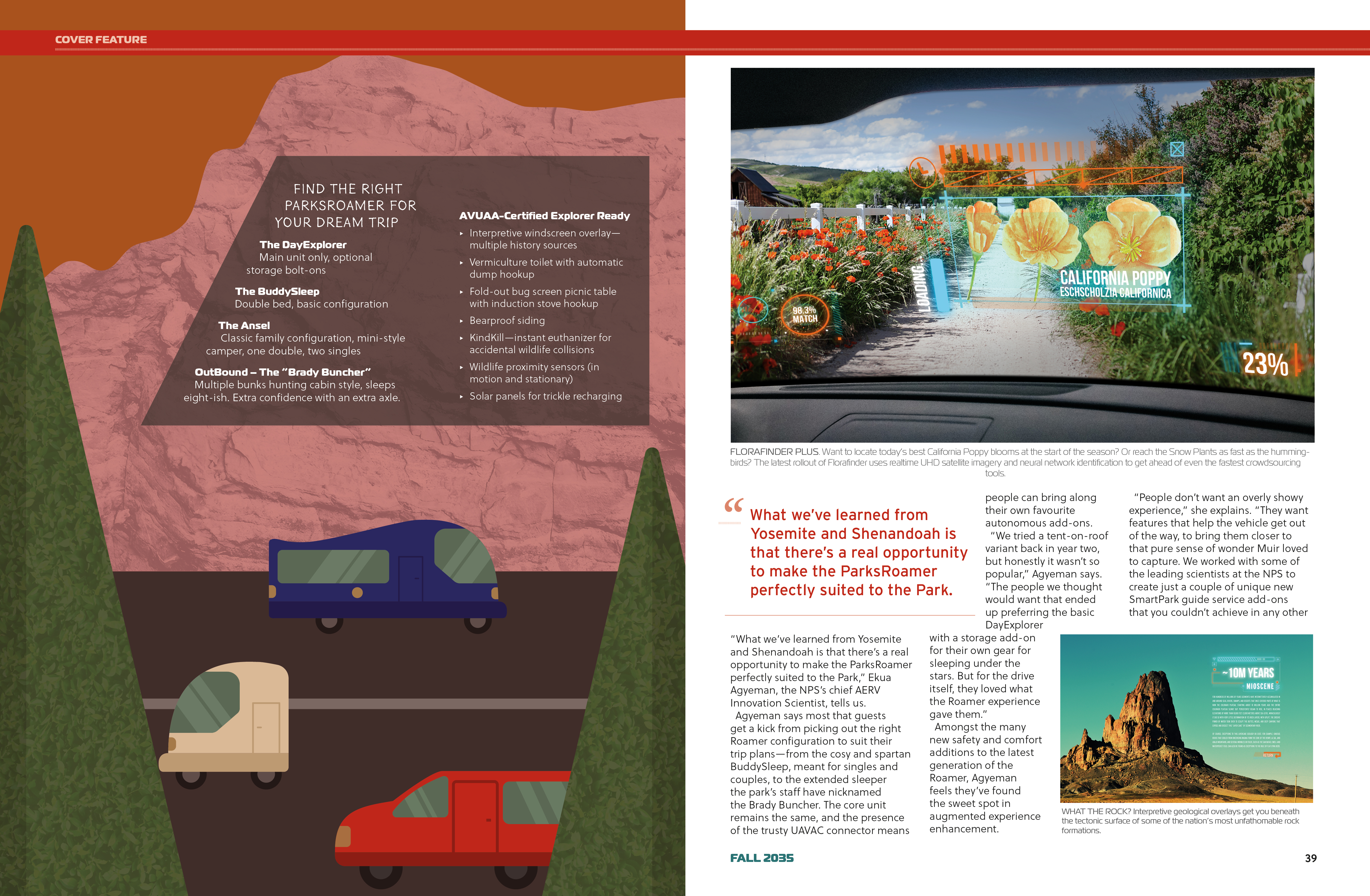
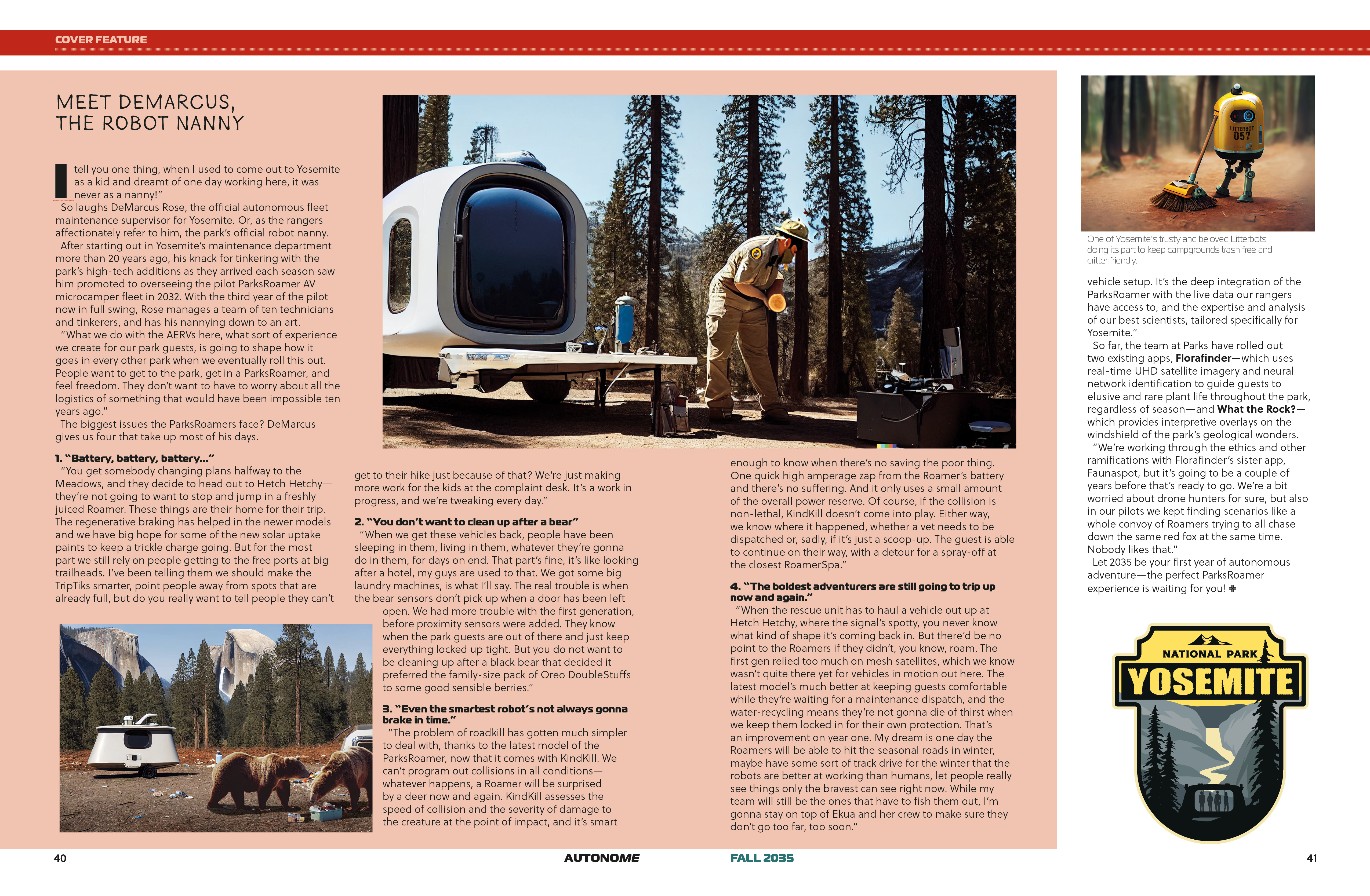
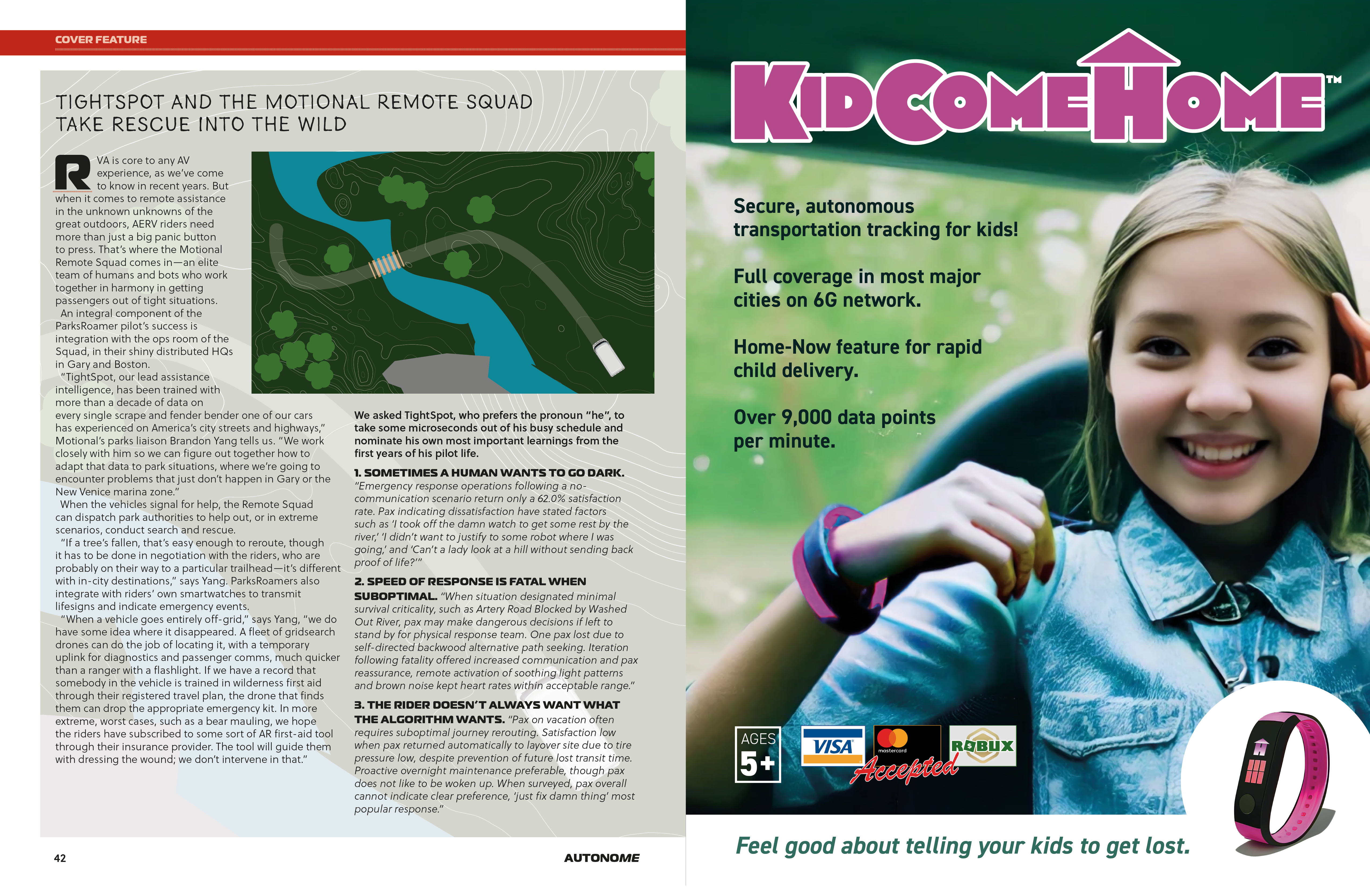
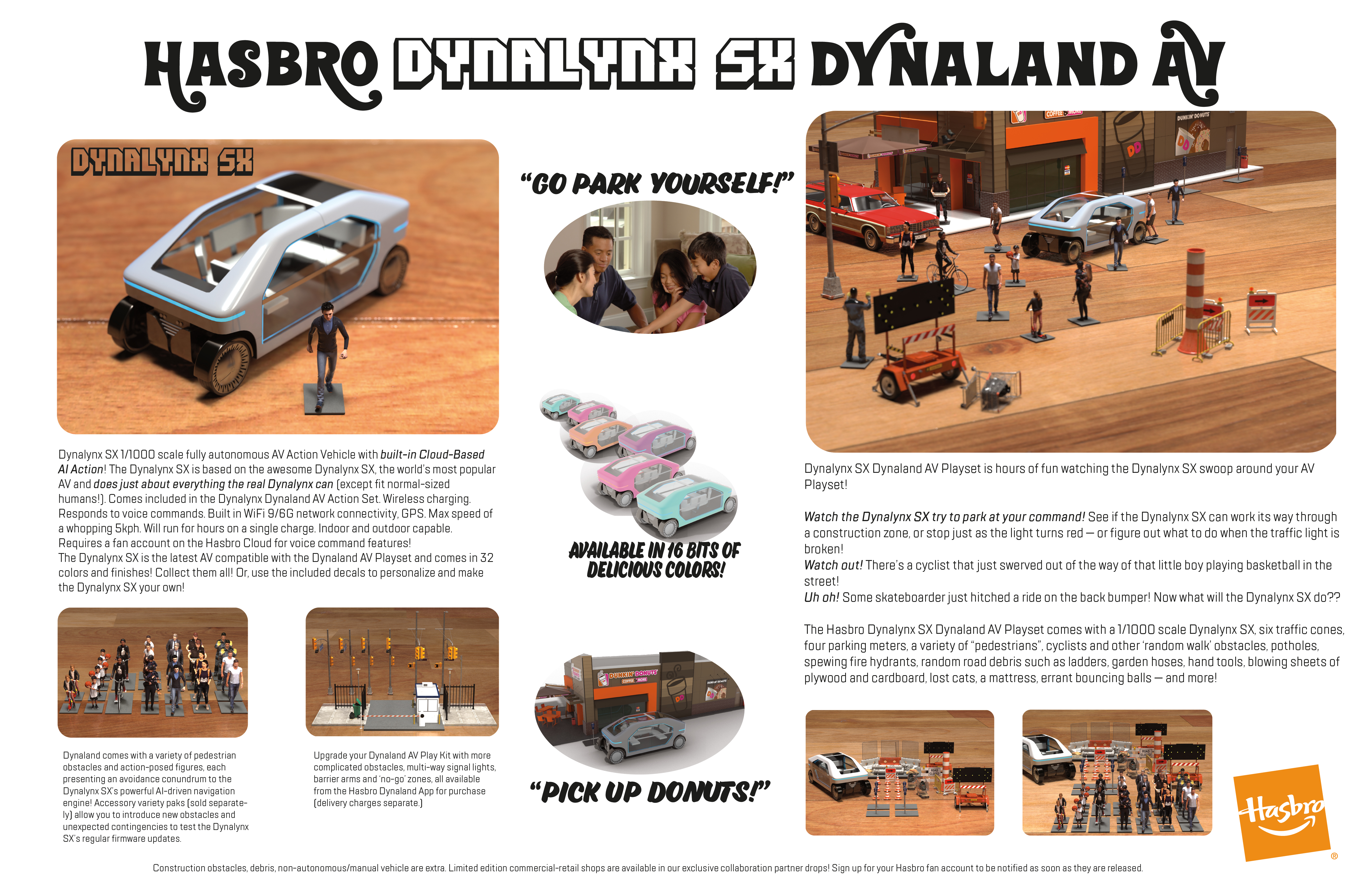
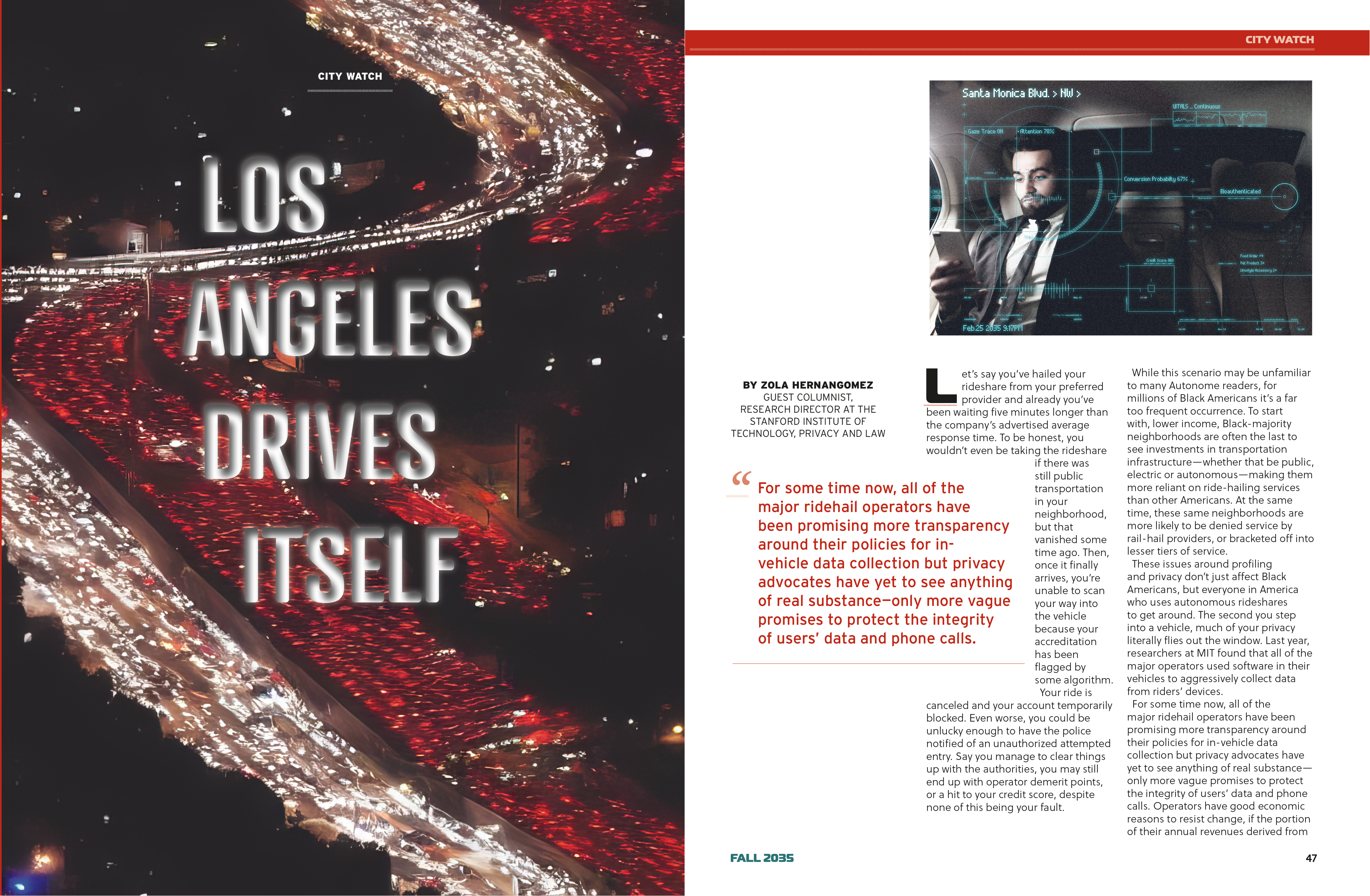
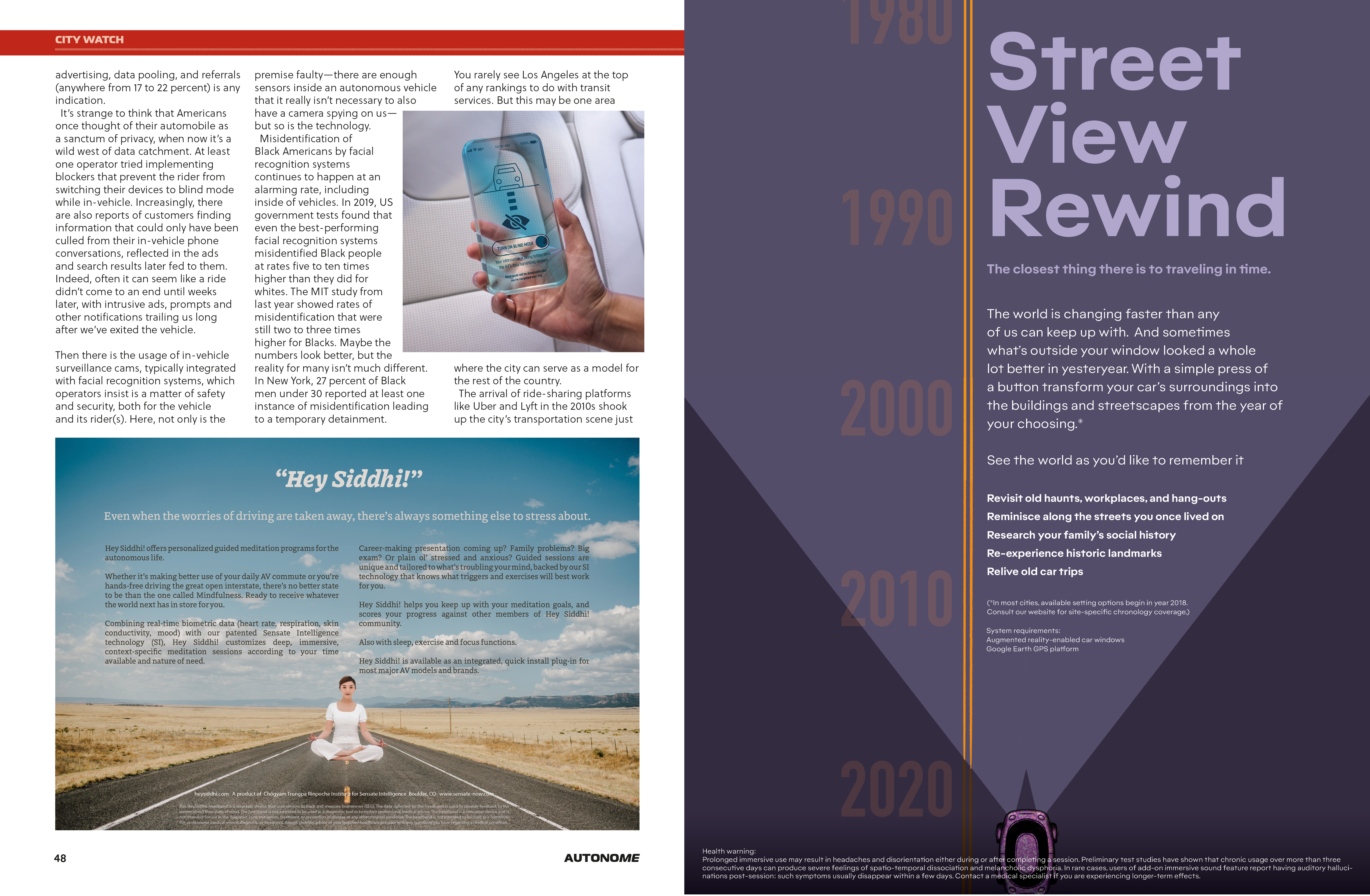
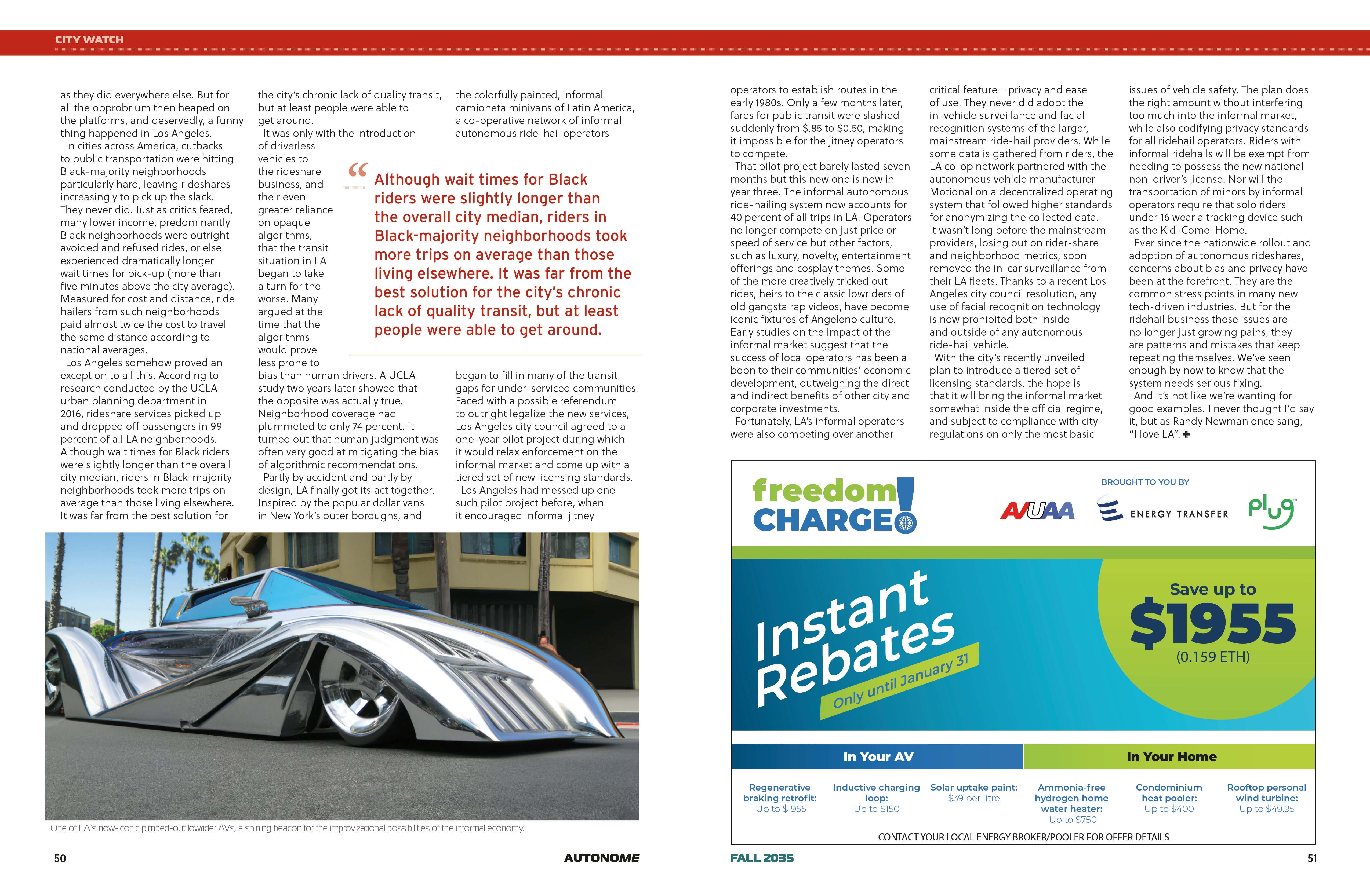
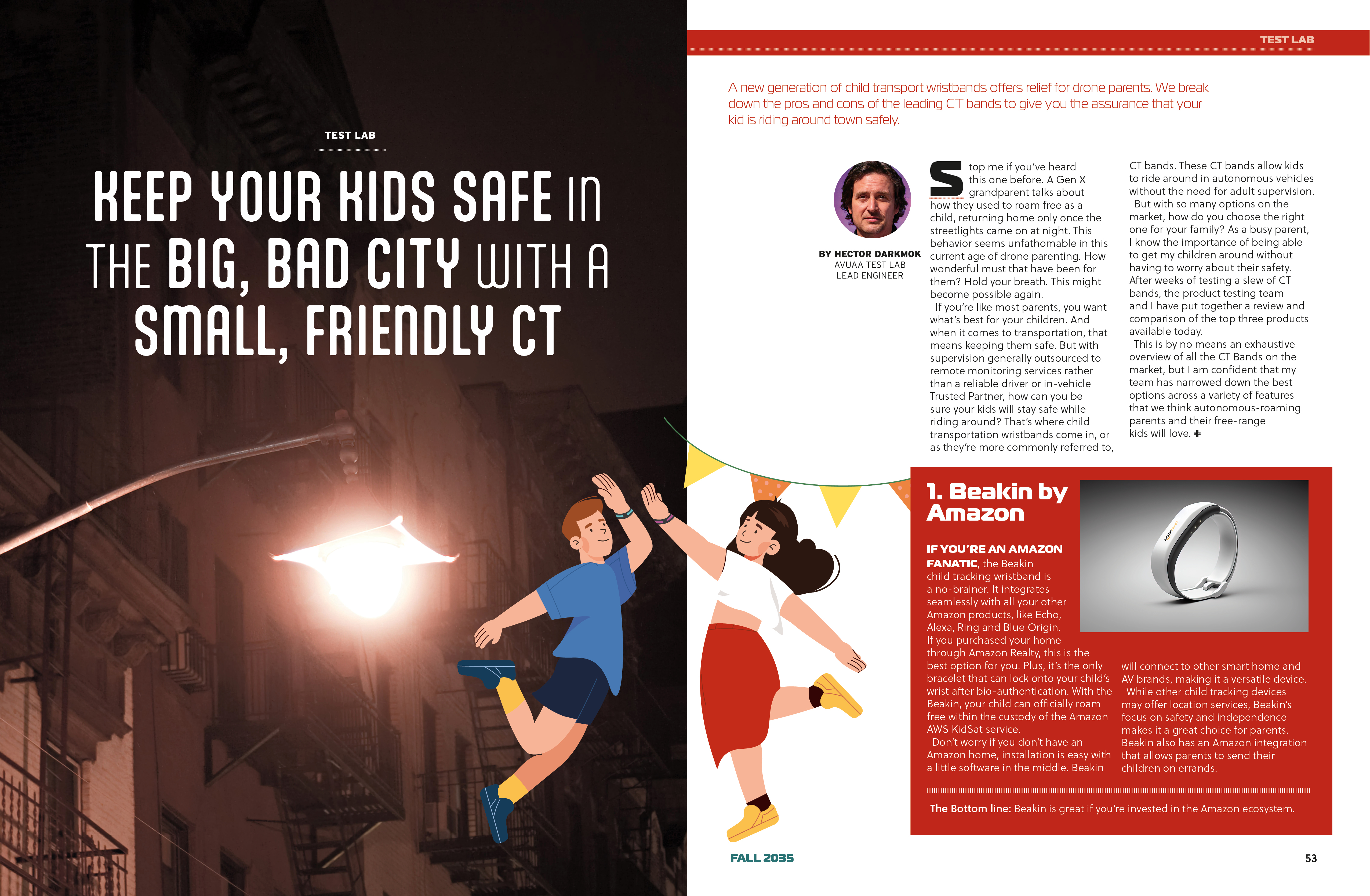
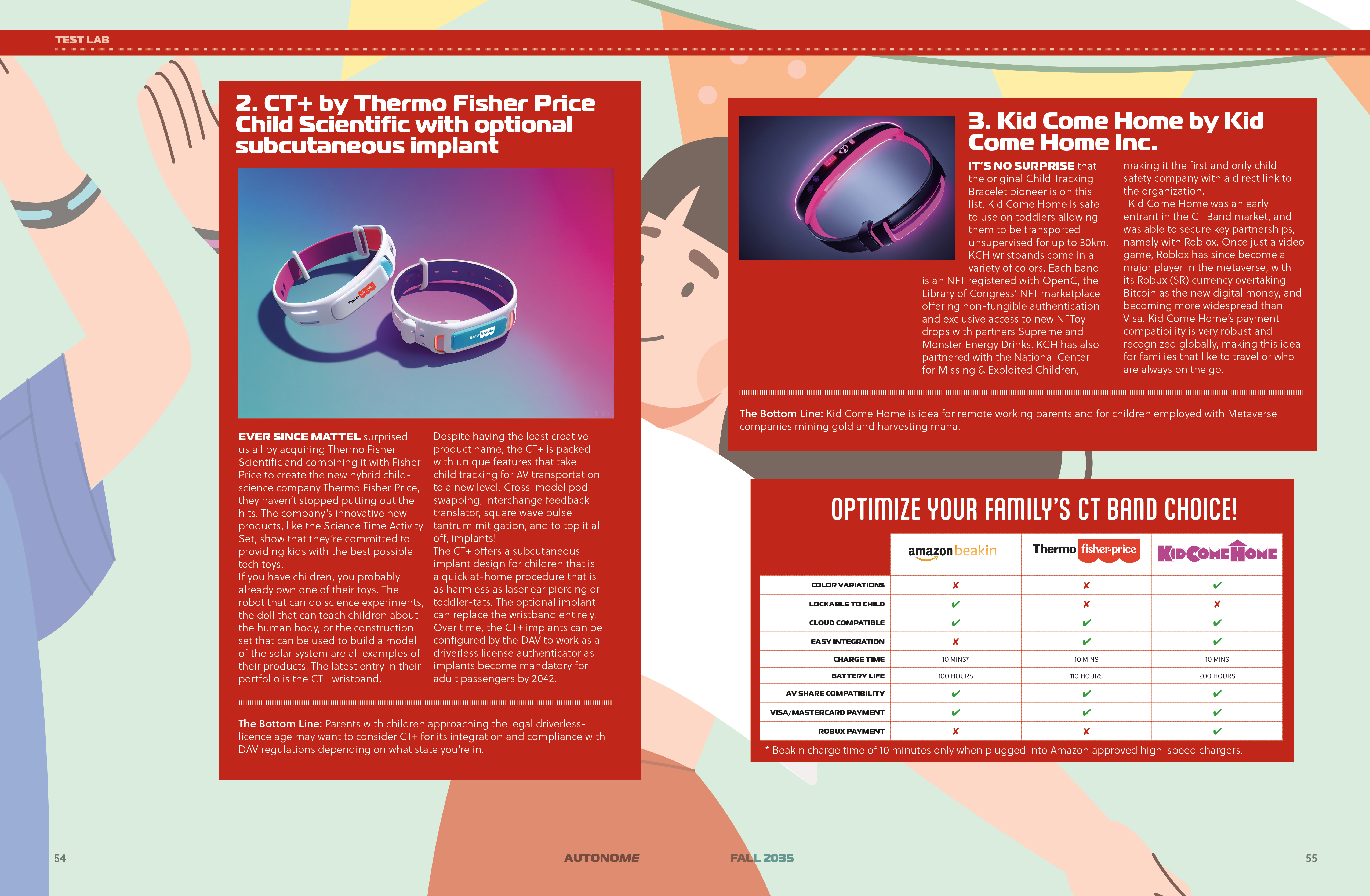
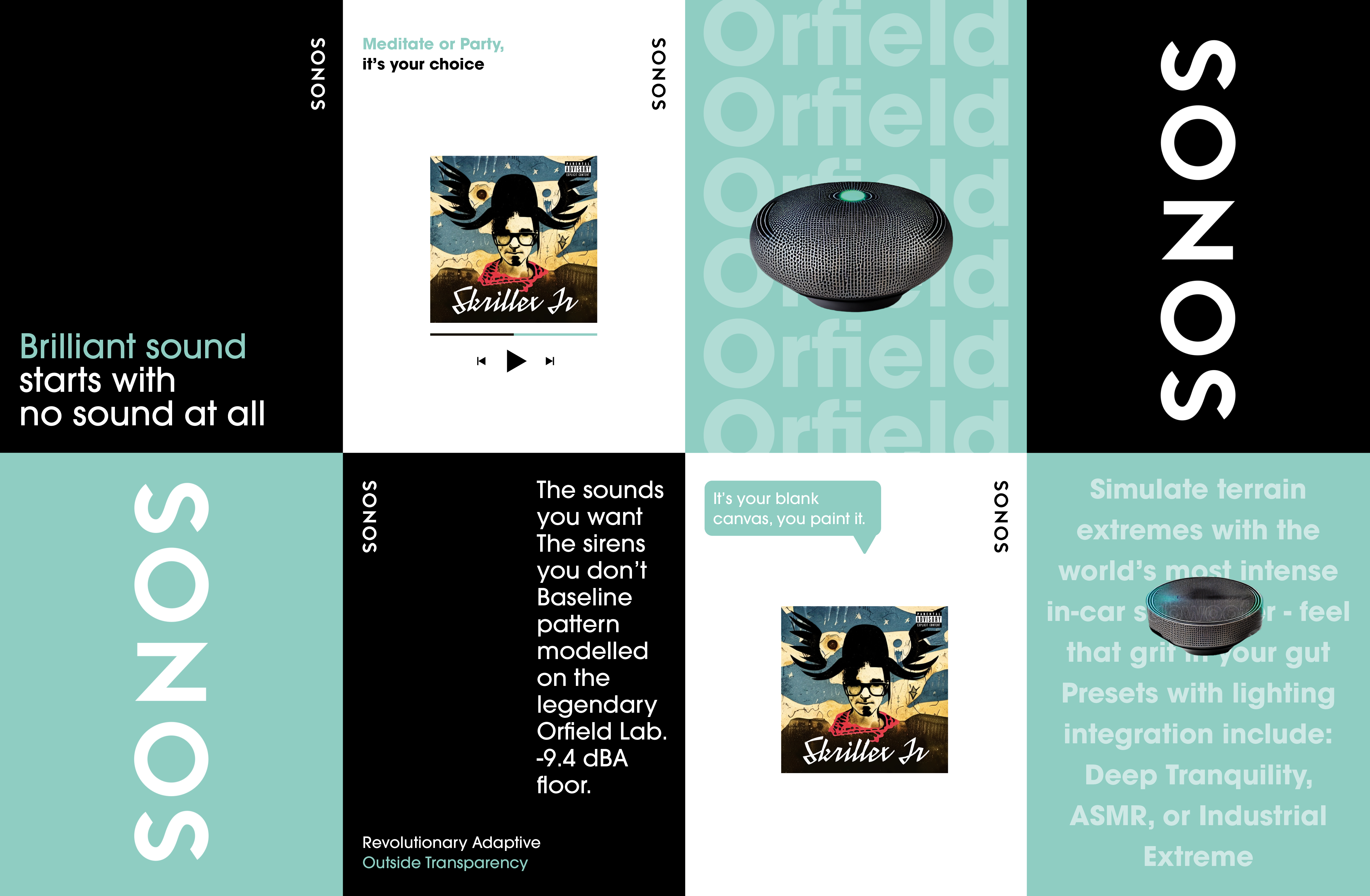
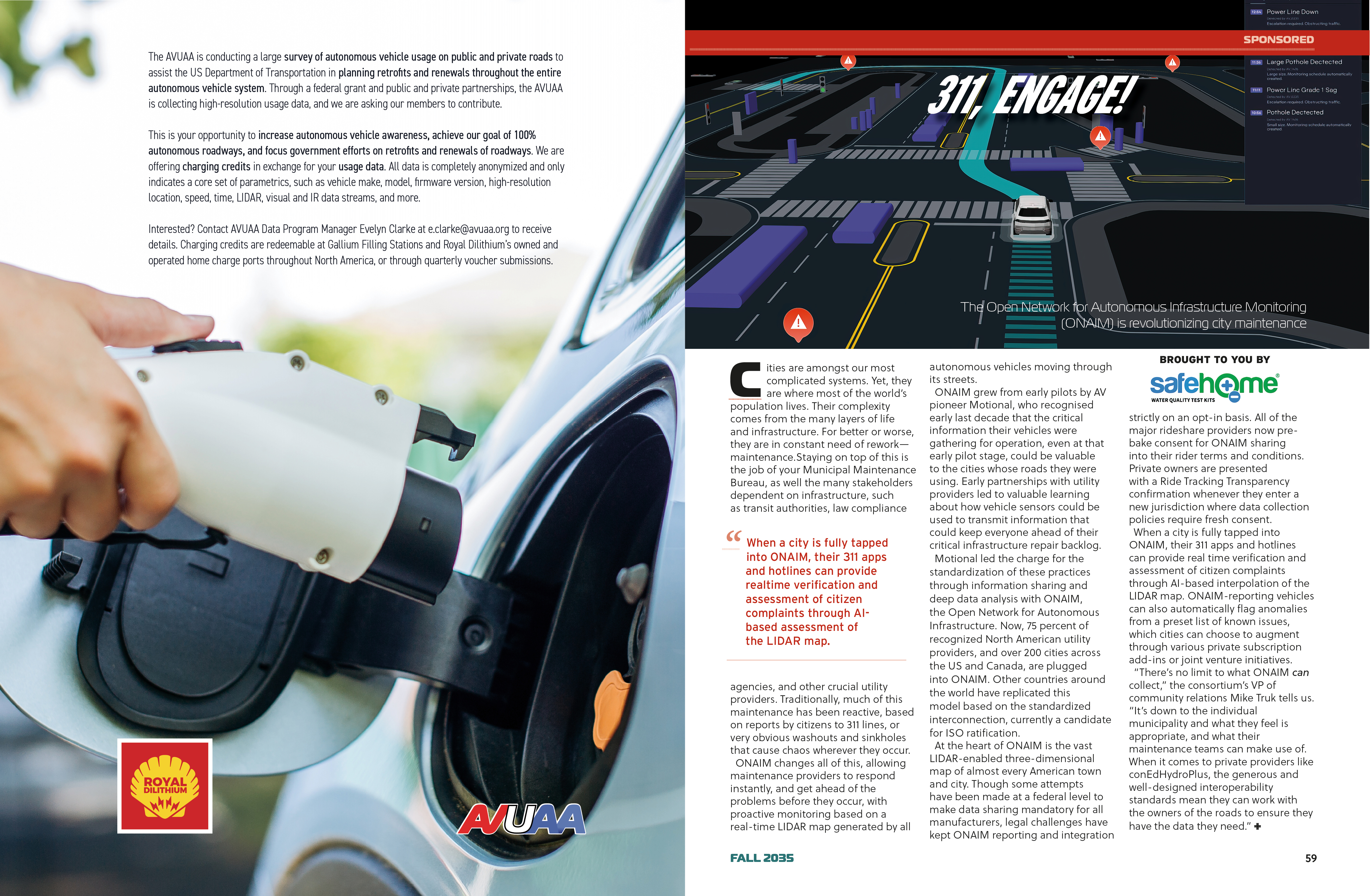
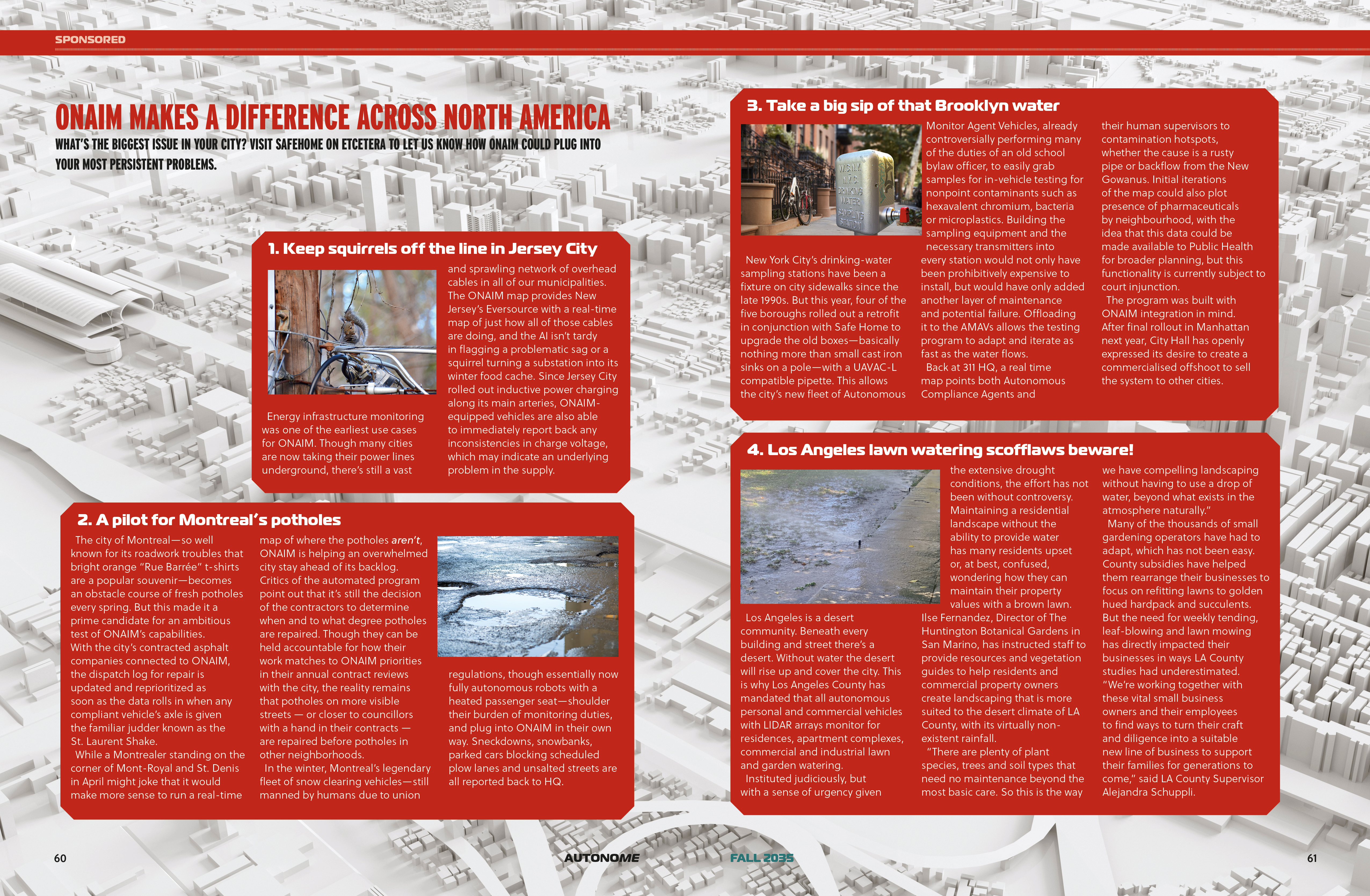
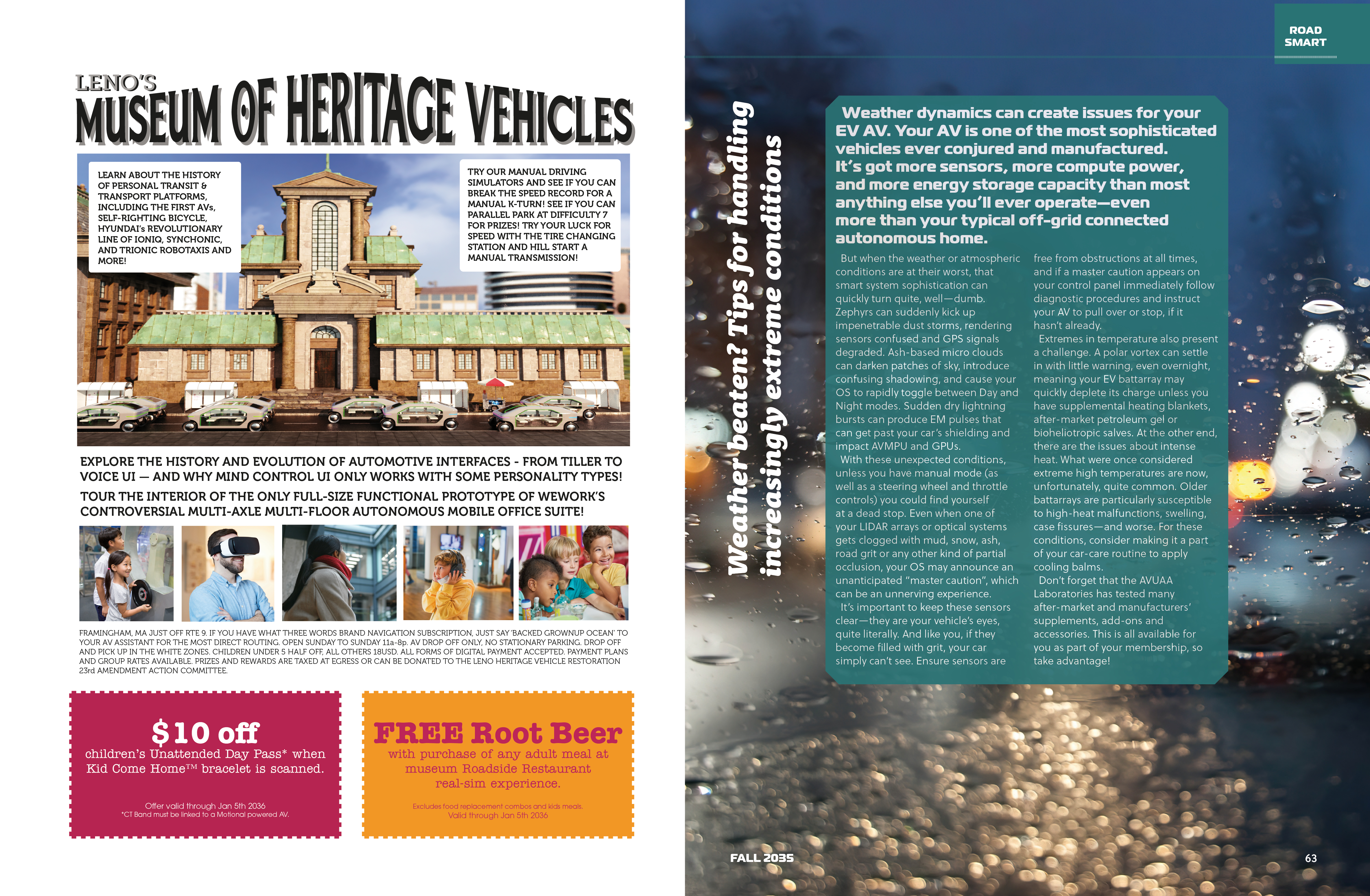
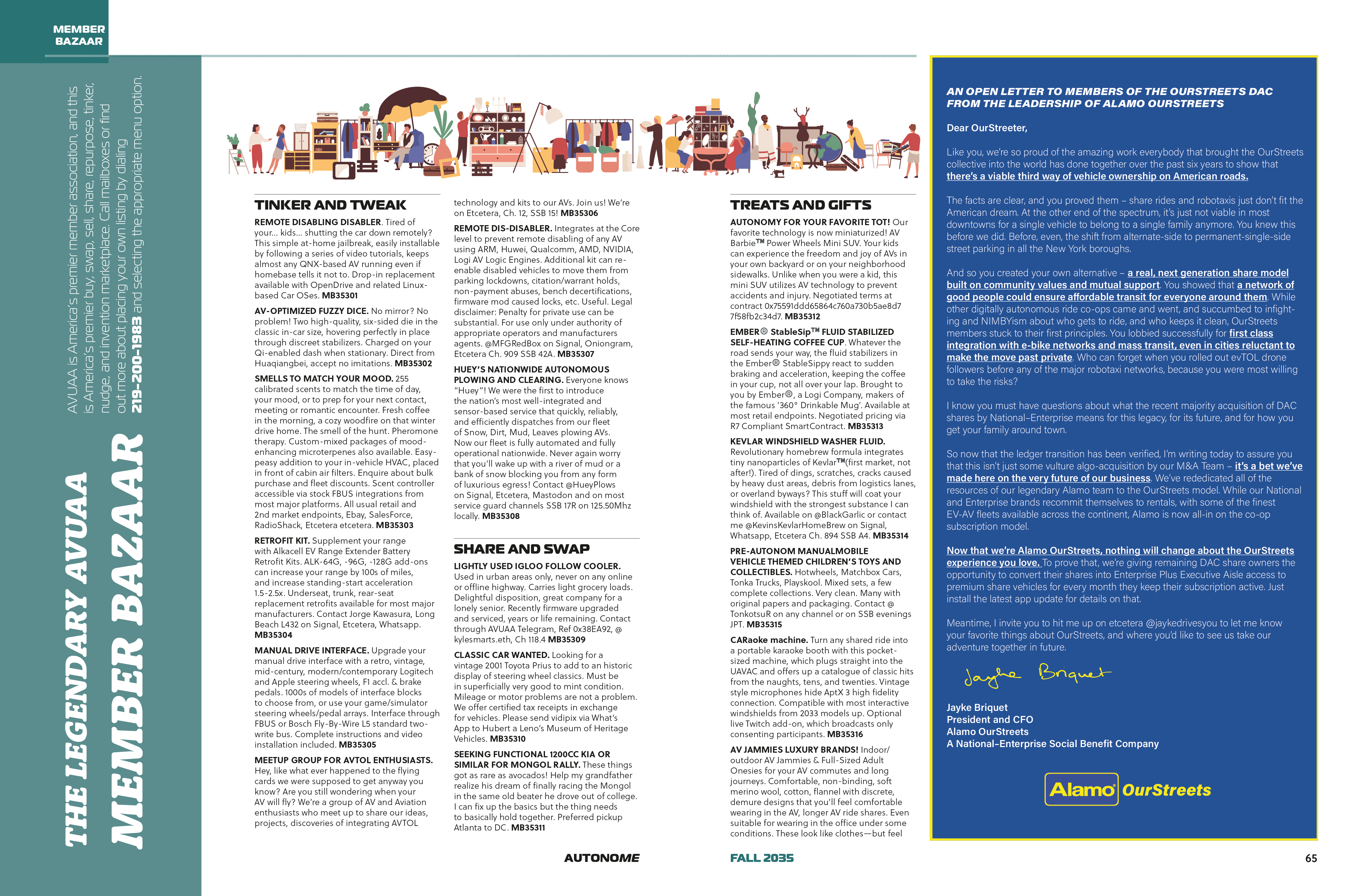
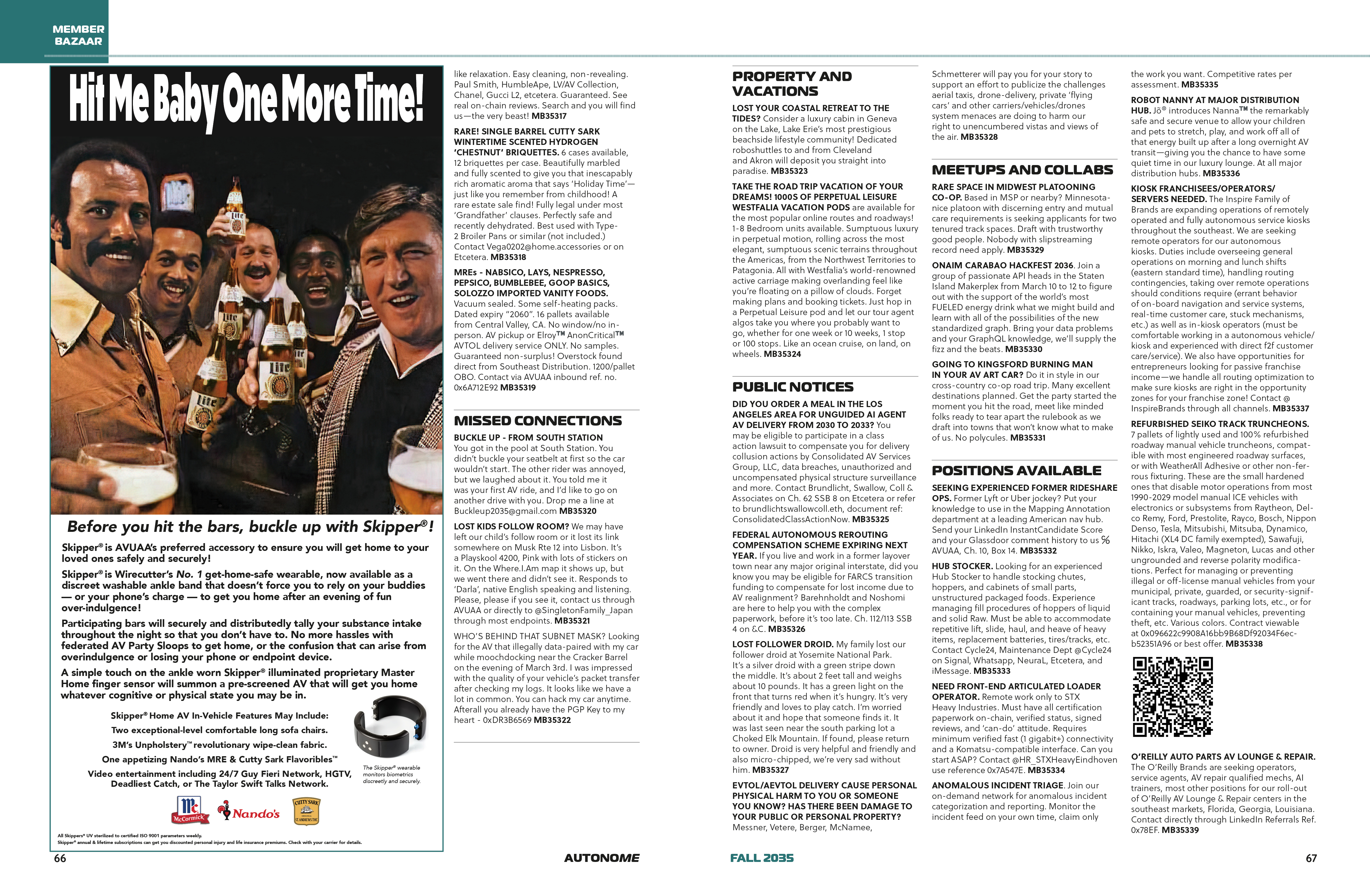
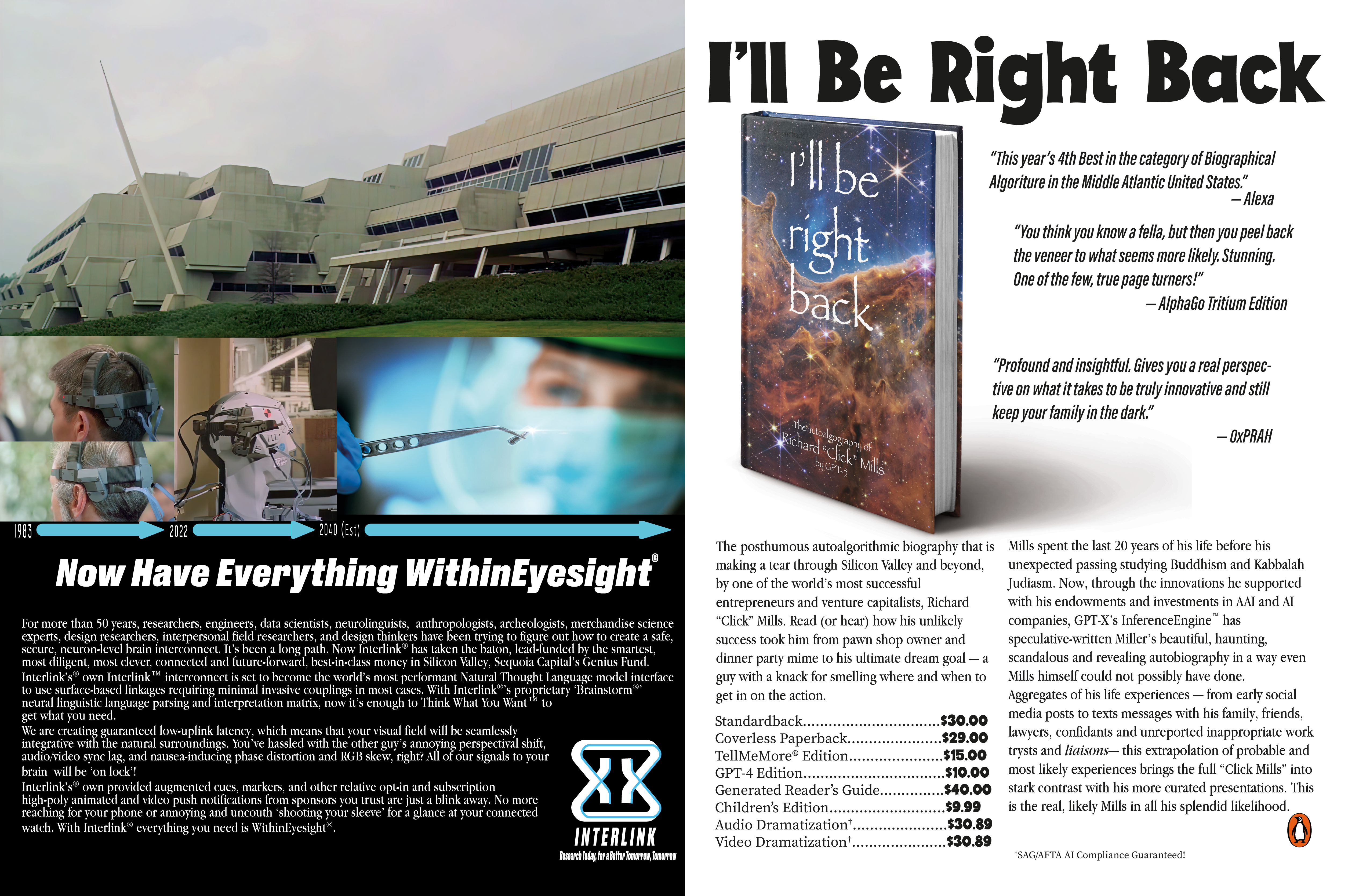
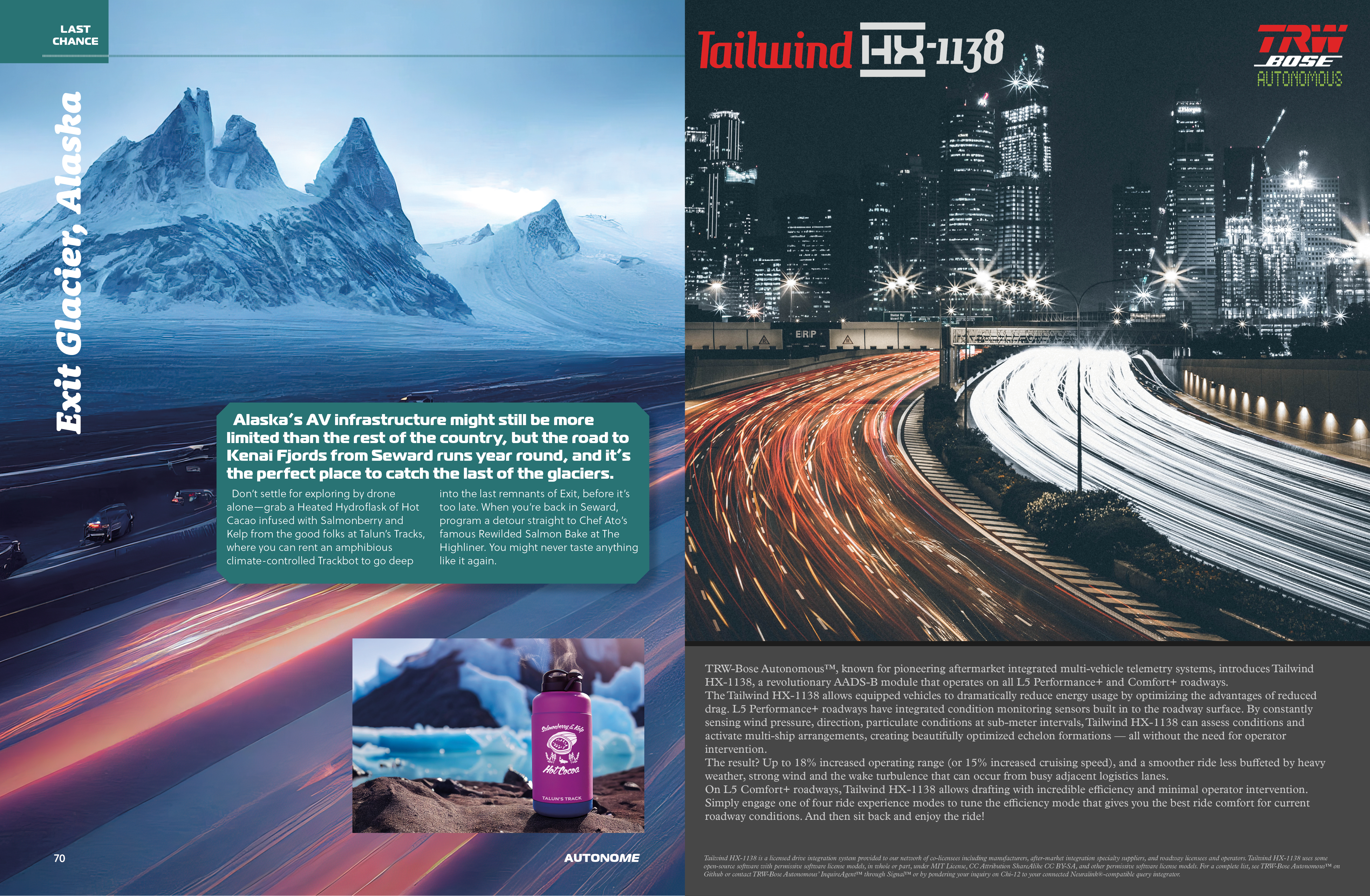
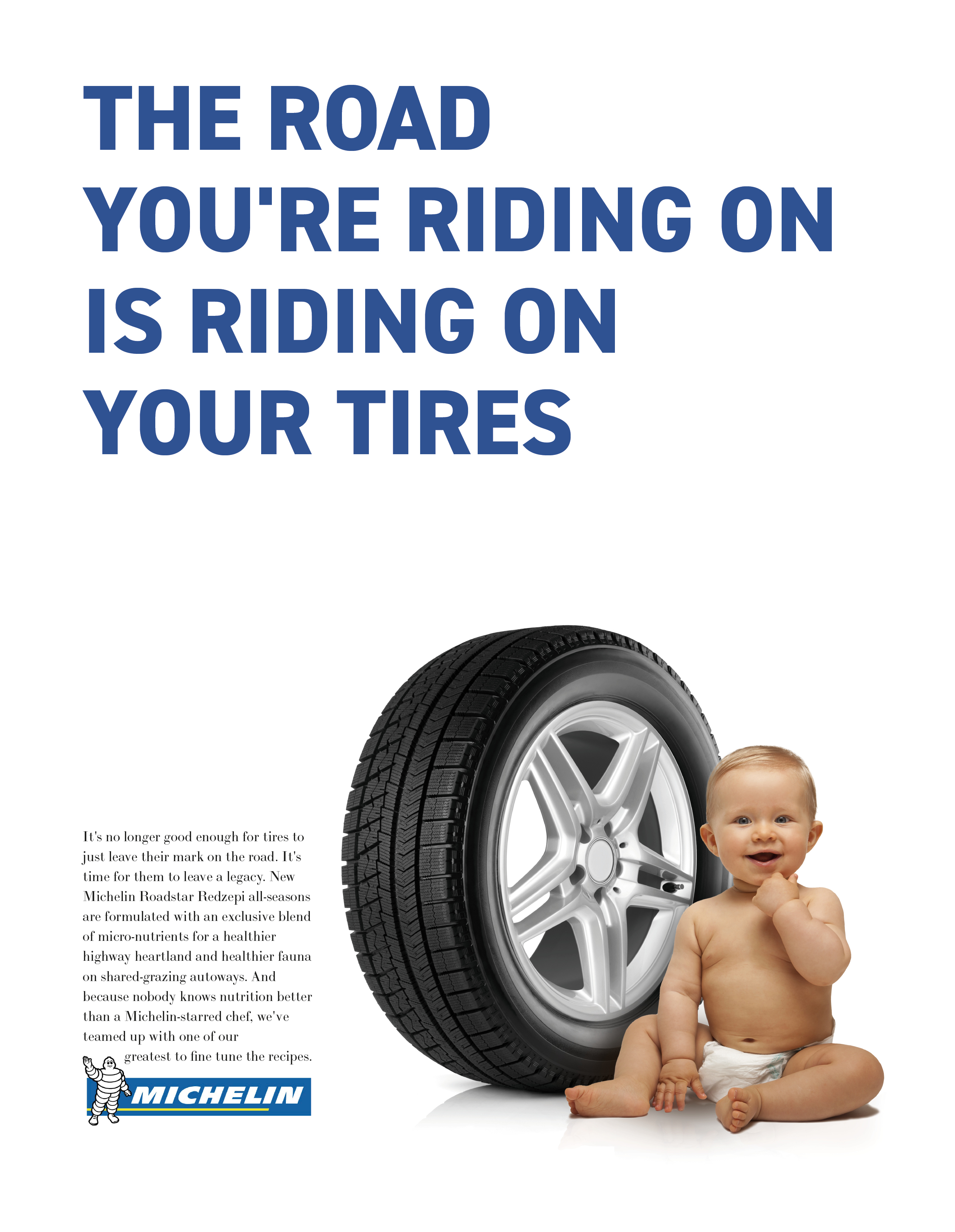
Use the Contact Form below to discuss how you can engage Near Future Laboratory to help you make sense of your organization's possible futures.